- Destinations
- Bhitarkanika Nature Camps
- Similipal Nature Camps
- Satkosia Nature Camps
- Satkosia Sands Resort (Badmul)
- Debrigarh Nature Camp (Hirakud)
- Chilika Nature Camps
- Nuanai Nature Camp (Puri)
- Rissia Nature Camp (Kuldiha)
- Bichitrapur Nature Camp
- Daringbadi Nature Camp
- Belghar Nature Camp
- Phulbani Nature Camps
- Chandaka Nature Camps
- Blackbuck Nature Camps(Ganjam)
- Giant Squirrel Nature Camp(Ganjam)
- Sana Ghagara Nature Camp
- Khandadhar Nature Camp
- Mahavinayak Nature Camp
- Olasuni Nature Camp
- Saptasajya Nature Camp
- Sidhamula Nature Camp
- Sarafgarh Nature Camp
- Ansupa Nature Camp
- Berbera Nature Camp
- Satiguda Nature Camp
- Chitrakonda Nature Camp
- Chandipur Nature Camp
- Patora Nature Camp
- Tensa Nature Camp
- Koraput Nature Camp
- Nrusinghnath Nature Camp
- Ghodahada Nature Camp
- Rabandhara Nature Camp
- Dambargarh Nature Camp
- Mangrove Retreat Nature Camp

Day Destination11
- Jaydev Batika
- Jungle Safari
Safari Booking
- CRUISE(BOATING)
- Entry Ticket
- CRUISE(Boating)
- Site Administrators
- Site Managers
- Booking Queries
- Accomodation
- Facility Booking
ECOTOUR ODISHA
Related Small Content Goes Here...
Odisha is the land of famed forests, mountains, valleys, waterfalls, gorges, soaring peaks with stunning wildlife in their own natural habitats. The important wildlife in State are Elephants, Tigers, Leopards,Hyena, Sambar, Spotted Deer, Wild Boar, Giant Squirrel, Crocodile, Jungle Cats, Hornbills, many migratory birds etc. A total of 110 species of reptiles including three crocodilian species, 20 species of amphibians, 479 species of birds, 86 species of mammals have been recorded so far in the State. For Nature tourists looking to experience wild landscapes in a sustainable way, from Camping to Eco-Resorts,from trekking to birding, from sightseeing to boating,Odisha offers something for everyone and the only thing surpasses the beauty of the State...is the experience of being here..
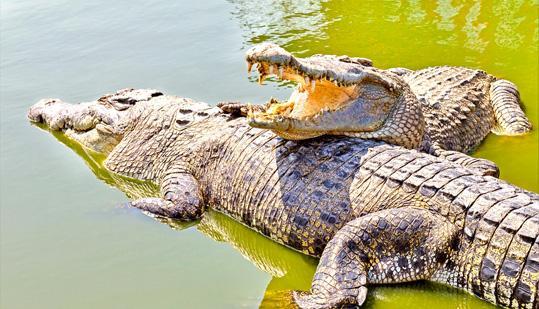
Jungle Trek

Other Destinations
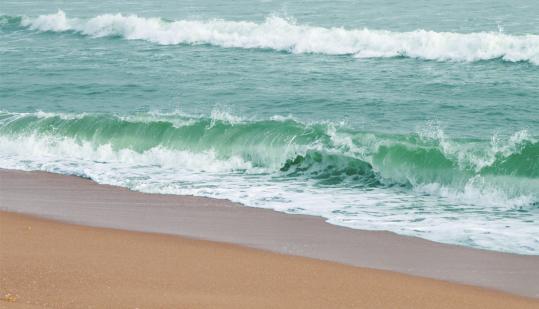
Ecotour Odisha
- Visitor Information
- Privacy Policy
- Refund & Cancellation
- Department of Tourism,GoO
- Associate With Us
- Terms & Conditions
- Visitors Feedback
- Agent Registration
- Agent Login
- Booking Agents
- Taxi Operators Registration
- Taxi Operators
- Accomodation Cancel
- Safari Cancel
- Boating Cancel
- Ecotourism Cell & City Booking Center O/O Principal Chief Conservator Of Forests & Chief Wildlife Warden, Odisha Prakruti Bhawan, Plot no-1459 Green Park Nursery, Saheed Nagar Bhubaneswar-751007, Odisha
- [email protected]
- +91 (0)674-2549553/2549558
- +91-8249640359/9861806741
ECO RETREAT BHITARKANIKA
A blend of adventure & luxury awaits you inside a National Park... Eco Retreat Bhitarkanika
Luxury Tents
Eco retreat bhitarkanika, deluxe swiss cottage.
With a comfortable twin / double bed along with a spacious porch and attached bathroom.
Premium Swiss Tent
Comfortable twin / double bed with a spacious sitting space to relax and en suite bathroom.
Book your dream vacation now
Camping like never before.
- 100 % Safe & Hygienic
- 24x7 Assistance
- Restaurant Dining
- Air Conditioning / Heating
- Beach Activities
Guided Tours
- Doctor on Call
- Well Appointed Toiletries
Water Sports
Take only memories , leave only footprints ., take only memories, leave only footprint., enjoy your action packed holiday.
Make the most of your visit and head down for a range of exciting motorised and non-motorised watersports.
Rifle Shooting, Archery, ATVs, Bicycles, Beach Volleyball, etc.
Invent a new road to explore the unexplored with our friendly and professional guided tours.
Culinary Experience
No holiday is complete without a delightful culinary experience. Enjoy an amazing selection of global cuisines with delicious, exciting & creative pre-designed menus spread over the various meals with optional beach side bar, evening barbeques or chai-tapri to engage with!
Private Celebrations
Celebrate your momentus occasions by booking exclusive areas for lunches and dinners like our Elevated Machaan Decks, Beachside Cabanas, etc.
How to Reach Bhitarkanika
Testimonials, what guests say about us.
"Amazing set-up, Calmness, efficiently managed, good food, warm and supportive staff, engaging activities!"
"Delicious spread of food. Excellent service. Overall excellent experience."
"Applausable attempt by the government to showcase prized natural resource of Orissa. Outstanding arrangements."
Popular things to do
Top attractions in bhitarkanika, bhitarkanika national park, boating in the creek, barunei forest, experience it soon, skip the traditional travel for a swanky glamping experience, download brochure.
2023 Eco Retreat - Odisha

Bhitarkanika Tourism
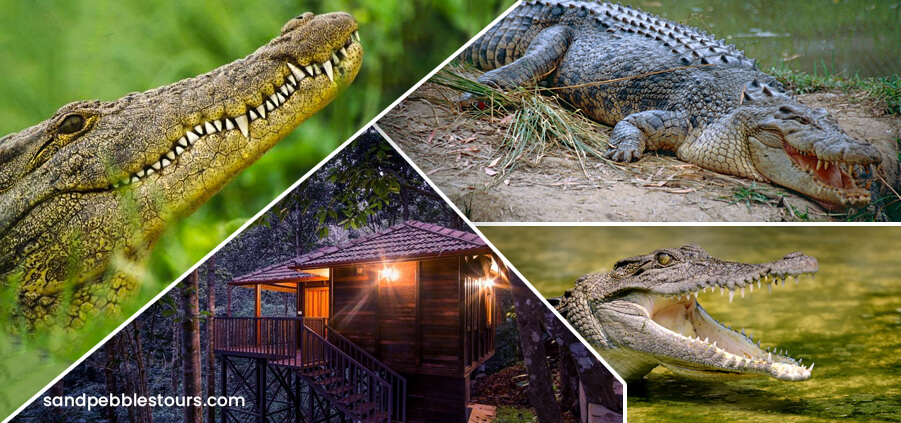
Bhitarkanika National Park is the second largest ecosystem in India. Sand Pebbles Bhitarkanika Tourism will let you experience the untold beauty of the wetland. The land of lush green mangroves, migrating birds and turtles, the menacing estuarine crocodiles, meandering watercourses, tranquil surrounding intercepted by the chirping of birds and the ever embracing nature, entrails visitors from near and far off places to flock these unique places of tourist importance. Scientists, Scholars, Nature Lovers and Tourists have abundant food for thought and exploration. Bhitarkanika Tourism covers all the spheres of adventure. The place represents one of the finest creations ever. Bhitarkanika is a unique habitat of Mangrove Forests crisscrossed with numerous creeks and mud flats located in Kendrapara district of Odisha. One of the largest Mangrove Ecosystem in India, Bhitarkanika is home to diverse flora and fauna. With Sand Pebbles Bhitarkanika Tourism packages you can have the adventure you were searching for. The unique bio-diversity attracts visitors to nature’s lap. Bhitarkanika National Park is a prime habitat of Leopard cat, fishing cat, jungle cat, hyena, wild boar, spotted deer, sambar, porcupine, dolphin, saltwater crocodile including partially white crocodile, python, king cobra, water monitor lizards, terrapin, marine turtle, kingfisher, woodpecker, hornbill, bar-headed geese, Brahmani duck, pintail, white-bellied sea eagle, tern, seagull, waders and a large variety of resident and migratory birds. So, without further ado, pack your bags for this adventurous tour with Sand Pebbles Bhitarkanika Tourism.
Where To Stay: Sand Pebbles Bhitarkanika Jungle Resorts at Bhitarkanika National Park offers ace-class accommodation with modest facilities for overnight stay.
Type of Accommodation:
- 14 SWISS TENTS (Double Bed, Triple Bed, Four Sharing-Beds).
- Cosy accommodation (Non-AC ) in Swiss Tents on, EP, CP, MAP and AP Plans.
- Sand Pebbles Bhitarkanika Jungle Resorts offers lucrative packages designed especially for tourists – both from home and abroad.
Room Tariff : in INR : Per Night Effective From Dates 1st Aug 2020 to 31st Jul 2021.
Check For Discount Offer
Click Here For Reservation / Cancellation Policy. How to Reach
Bhubaneswar – Khola / Gupti (160 kms) Cuttack – Khola / Gupti (140 kms) Bhadrak -Chandabali (60 kms) Bhadrak – Jayanagar (80 kms)
Nearest Railway Station :
Bhadrak – 60 kms to Chandabali Bhadrak – 80 Kms to Jayanagar Cuttack – 140 kms to Khola / Gupti Bhubaneswar – 160 kms to Khola/Gupti
Nearest Airport :
Bhubaneswar – 160 kms to Khola / Gupti Direction from Bhubaneswar to Bhitarkanika
GST ID NO: 21AAPCS4671P1ZP
General Information
- Rates are inclusive of all taxes. ( Subject to change in future ).
- Children below 5 years of age are free.
- Booking is subject to availability.
- Swiss-Tent Accommodations at Sand Pebbles Bhitarkanika Jungle Resorts (Bhitarkanika National Park).
- Bhitarkanika National Park Remains close from 01st May till 31st July for Breeding and Nesting of its habitats and re-opens for the tourist from 01st August every year.
- Above rates are not applicable for Saturdays. Alternatively packages may be available for booking.
Click Here For Reservation / Cancellation Policy.
Amenities and Services : Fully Furnished Tents, Restaurant and Hygienic Food, Hammocks(Swings), Fishing Rod Available(Angling), 24-hours water supply, Attached Bathrooms, Bonfire Place, 24-hours Electricity with back-up Generator, Classic Modern Amenities, Lively Rejuvenating Atmosphere, Leisurely Pollution-free Ambiance, Complementary Pick-up/Drop from Boating-point (only Arrival / Departure)
Activities and Services offered : Lucrative Accommodation, Highly tasty and hygienic Food, Scenic Boat Cruising, Bonfire, Angling, Corporate Events, Get-togethers, Outing, Team Building Activities & Ice Breaking Sessions, Theme-Based Entertainment.
Major Attractions: Birds of 170 different species, 08 magnificent sub-species of Kingfishers, Open Billed Stork, Sea Eagles, Kites, Sand Pipers, Darters, Whistling Teals, Sea Gulls, 22-feet Crocodile(Kaalia), Famous White Crocodile(Gauri), Basking Crocodiles on Mudflat, Spotted Deer, Wild Pigs, Monitor Lizard, King Cobra, Pythons
Entry Points: Khola and Gupti are the two main entry points to enter Bhitarkanika National Park. Visitors should take entry permit from the Forest Check Gate at Khola and Gupti forest Dept. Private Boats are available at both the places. Private Boats are also available at JAYANAGAR & CHANDBALI. The entry points are well connected from the major cities of Odisha .
- Bhubaneswar – 160 KMS to entry point Khola/Gupti
- Cuttack – 140 KMS to entry point Khola/Gupti
- Bhadrak – 70 KMs to entry point Jayanagar Via Chandbali
Nearest Railway Station:
- From Bhadrak – 70 KMs to Jayanagar entry point
- From Cuttack – 140 KMs to Khola / Gupti entry point
- From Bhubaneswar – 160 KMs from Khola / Gupti entry point
Nearest Airport: Bhubaneswar
Bhitarkanika National Park
Bhitarkanika National Park is situated in the Kendrapara District on the state of Odisha, India. Spread across an area of 672 km 2 of the mangrove swamp situated on the delta formed by the three rivers namely Brahmani, Baitarani and Dhamra. The National Park houses an array of creeks, backwaters, estuaries, deltas and mudhuts. The region has truly preserved and maintained the region's geomorphic and ecological balance.
Established in the year 1998, the park is surrounded by the Bhitarkanika Wildlife Sanctuary. The mangroves are separated from the Bay of Bengal by the Gahirmatha Beach that lies in the eastern part. This beach is the nesting grounds by hundreds of Olive Ridley Sea Turtles and thus is a protected UNESCO site. Bhitarkanika National Park truly plays a vital role in promoting eco-tourism in Odisha.
The Bhitarkanika national park is home to over 70 species of Mangrove that is spread across the forest region, park, swamps, marshy lands, ceeks etc. Some of the other flora comprises The Spia, Casuarinas & Sundari and Indigo Bush grasses. Apart from this, trees of Teak, Hair, Babul, Salaia, Bamboo, Zizphus, Palas and Kauriculata also cover some part in the national park.
Bhitarkanika National Park is home to an array of avifauna such as Asian Open Bills, Darters, Egrets, Woodpecker and so on. Additionally, the park is flocked with Ibis & Cormorants, White Bellied Sea Eagle, Brahmany Ducks, Sea Gull, Hornbill, Waders and Bar Headed Geese. Apart from these species, the park is also home to eight varieties of Kingfishers.
Owing to the keen efforts of the national park authorities, this protected area had been successful in protecting Saltwater Crocodile (Crocodylus porosus) and White Crocodile. Some other species that the park houses are Indian Pythons, Rhesus Monkeys, Black Ibis, Darters, Wild Pigs, Cobras, Water Monitor Lizards, Wild Boars, Chitals and Spotted Deer.
Entry Points
The two main entry points to Bhitarkanika are Khola and Gupti. An array of boat services run by the private sector and the forest department can be availed to reach the Bhitarkanika National Park.
Best Time to Visit
One can visit Bhitarkanika from October to April, when the weather remains pleasant and allows the movement of the wildlife as well as the tourists.
How to Reach Bhitarkanika National Park
Bhadrak and Cuttack are the nearest railheads to Bhitarkanika.
The nearest airports to Bhitarkanika are Kolkata and Bhubaneswar.
Chandibali, the nearest town to Bhitarkanika is well connected to the other cities of Odisha via road.
Some Notable Odisha Wildlife Destinations are:
Please leave your details so that we can reach you.
© 2024 Visit Odisha | All Rights Reserved
Incredible Odisha
Eco Tourism Odisha – 5 Best Nature Camps
Eco Tourism Odisha has become an increasingly popular way for travellers to experience the beauty and diversity of nature while preserving it for future generations. With a range of diverse ecosystems, including forests, wetlands, and coastlines, Odisha’s Eco-Tourism offerings are vast and varied. From exploring wildlife sanctuaries to visiting tribal villages, there are many ways for travellers to experience the state’s natural wonders in a responsible and sustainable way.
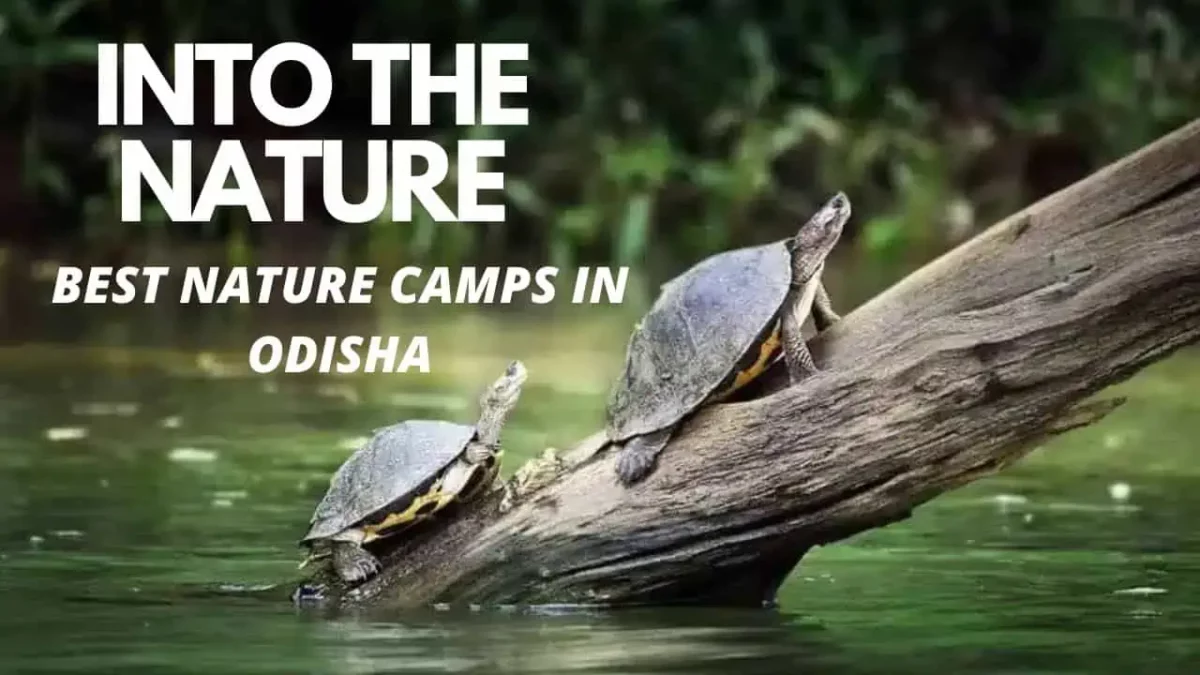
In this article, we will provide an overview of Eco-Tourism in Odisha, highlighting some of the top destinations and activities for nature lovers and adventure enthusiasts. We will look at the Best Nature Camps in Odisha and how you can visit them.
Odisha is a state with several UNESCO World Heritage sites, making it an ideal destination for those who want to experience the best of nature while contributing to its preservation.
One of the top eco-tourism attractions in Odisha is the Chilika Lake , the largest coastal lagoon in India. The lake is a birdwatcher’s paradise, home to thousands of migratory and resident birds, including the rare Irrawaddy dolphin. Visitors can take boat tours to explore the lake and see the birds and dolphins up close.
Another must-see destination for eco-tourism in Odisha is the Bhitarkanika National Park, which is home to a wide variety of animals, including saltwater crocodiles, spotted deer, and monkeys. Visitors can take boat tours through the park’s mangrove forests to see the animals and learn about the local ecosystem.
Eco tourism Odisha not only provides visitors with an opportunity to experience the natural beauty of the state but also helps to conserve the environment and improve the lives of local communities. Many eco-tourism operators in Odisha are committed to sustainable practices, such as using eco-friendly transportation and promoting conservation education.
The Government of Odisha has also implemented policies and programs as part of Odisha Tourism to promote sustainable tourism development in the state. They have also developed many eco-tourism sites and nature trails in the state, and are actively working with private agencies to promote eco-tourism in the state to attract more visitors.
Consider reading – 20 Must Visit Best Tourist Places in Odisha
Page Contents
Eco Tourism Odisha – List of 5 Best Nature Camps
1. eco tourism odisha – bhitarkanika nature park.
The Bhitarkanika Nature Park in Odisha offers a truly unique experience for visitors looking to immerse themselves in the state’s natural beauty while also doing their part to support conservation efforts and better the lives of local communities. Bhitarkanika Nature Park camps are designed with sustainability in mind and are located within the Bhitarkanika National Park, home to a diverse array of animals and plants.
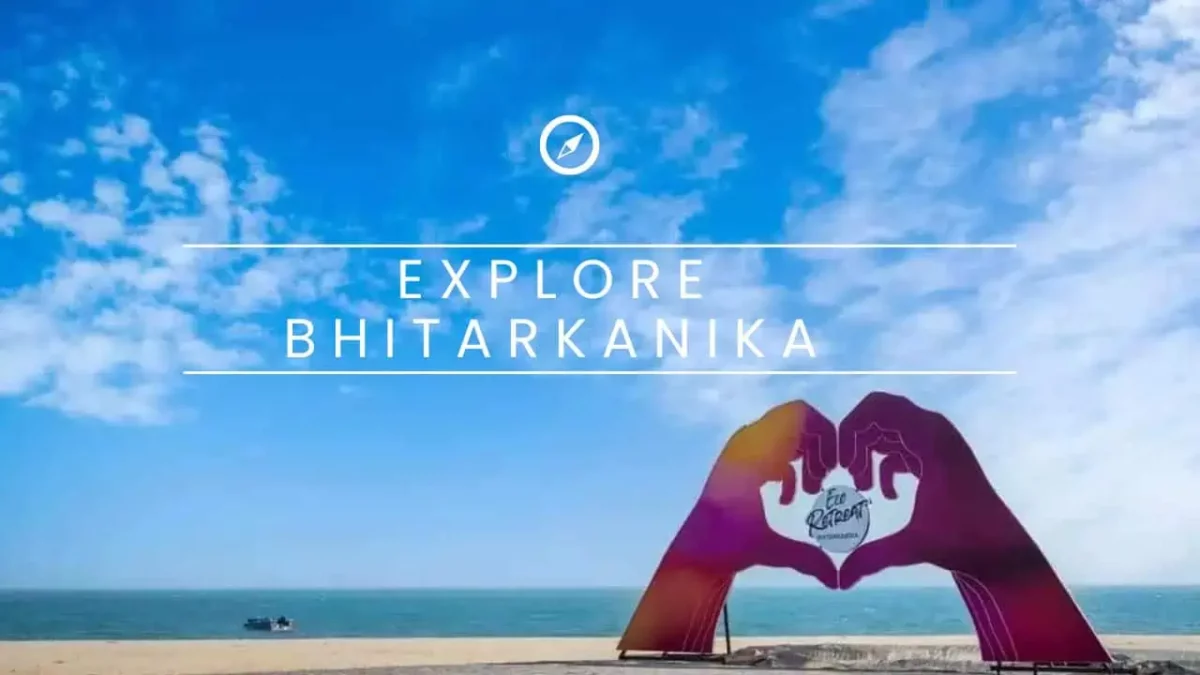
The Bhitarkanika National Park is situated in the Kendrapara district of Odisha and is home to a wide variety of animals, including saltwater crocodiles, spotted deer, and monkeys. The park also boasts a wide variety of plants, including mangrove forests, which are a birdwatcher’s paradise. The park is also a sanctuary for the Olive Ridley Sea Turtles, and visitors can witness the turtle nesting during winter.
Nature camps in Bhitarkanika offer visitors a chance to experience the park’s natural beauty and wildlife up close. Visitors can take boat tours through the park’s mangrove forests to see the animals and learn about the local ecosystem.
Guided nature walks and bird-watching tours are also available to explore the park’s flora and fauna. Visitors can also learn about the conservation efforts being taken to protect the park’s ecosystem and the local community’s livelihood.
These nature camps are also committed to sustainable practices, such as using eco-friendly transportation and promoting conservation education. They also work closely with local communities to promote sustainable tourism and improve their livelihoods.
In addition to the above activities, visitors can also take part in other activities such as kayaking, photography, and fishing. The camps also offer comfortable accommodations and delicious local food, making it an ideal base for exploring the park.
In conclusion, Bhitarkanika Nature Camps in Odisha offer visitors a chance to experience the park’s natural beauty and wildlife up close. Visitors can take part in activities such as boat tours, nature walks, and bird watching, and can feel good knowing that their visit is promoting sustainable tourism practices.
Bhitarkanika Nature Park Camps are perfect for nature enthusiasts who care about environmental and social sustainability.
Bhitarkanika Nature Park Camps are one of the Best Nature Camps in Odisha.
2. Eco Tourism Odisha – Similipal Nature Camp
Similipal Nature Camp in Odisha provides a one-of-a-kind chance for visitors to immerse themselves in the state’s natural beauty while also doing their part in conservation efforts and enhancing the lives of local communities.
This Nature camp is located in the Similipal National Park, a place that boasts a wide variety of animals and plants and is a popular eco-tourism spot. Known for its picturesque surroundings and biodiversity, Similipal offers an experience that is truly unforgettable.
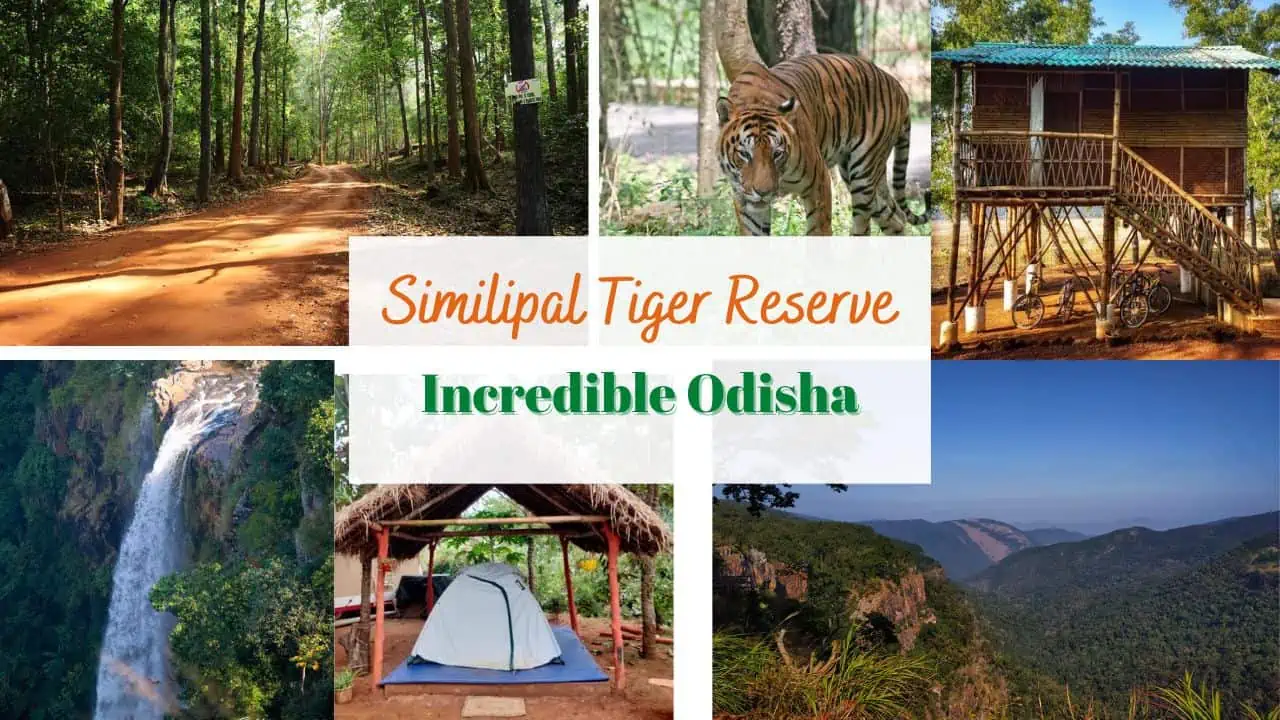
The Similipal National Park is located in the Mayurbhanj district of Odisha and is home to an array of animals, including tigers, leopards, elephants, and various species of deer.
The Similipal National Park is also filled with a variety of plants, including Sal and mixed deciduous forests, which are home to a wide range of bird species. The park is also a sanctuary for the Indian Gaurs, and visitors can witness these creatures in their natural habitat.
Similipal Nature Camp offers visitors the chance to experience the park’s natural beauty and wildlife up close. Visitors can take guided jungle safaris, nature walks, and bird-watching tours to explore the park. Visitors can also learn about the conservation efforts that are being taken to protect the park’s ecosystem and the livelihood of the local community.
This camp is also committed to sustainable practices, such as using eco-friendly transportation and promoting conservation education. They also work closely with local communities to promote sustainable tourism and improve their livelihoods.
In addition to the above activities, visitors can also take part in other activities such as trekking and rock climbing. The camps also offer comfortable accommodations and delicious local food, making it an ideal base for exploring the park.
The Similipal National Park Nature Camps have been awarded as one of the Best Nature Camps in Odisha.
In conclusion, Similipal Nature Camp in Odisha provides visitors with a chance to experience the park’s natural beauty and wildlife up close. Visitors can take part in activities such as jungle safaris, nature walks, and bird watching, and can be confident that their visit is promoting sustainable tourism practices. These nature camps are perfect for nature enthusiasts who care about environmental and social sustainability.
3. Eco Tourism Odisha – Satkosia Nature Camp
If you’re looking for an adventure that will take you away from the hustle and bustle of everyday life, the Satkosia Nature Camp in Odisha is the perfect destination. Surrounded by the stunning natural beauty of the Satkosia Gorge, this Eco Tourism Odisha spot offers visitors the chance to immerse themselves in the state’s rich biodiversity and also support conservation efforts.
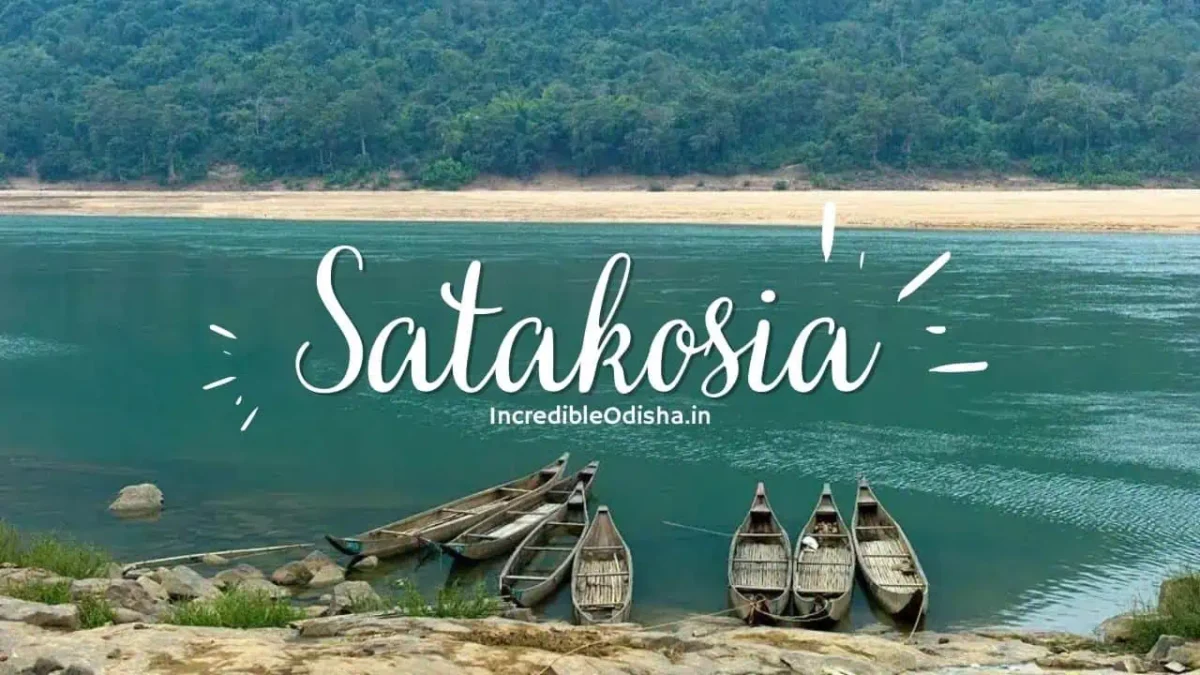
The Satkosia Gorge is located in the Angul district of Odisha and is home to a wide variety of animals and plants. From the rare Giant Indian Gharial and Mahseer fish to various species of deer, there’s plenty to see and discover.
The Gorge is also home to tropical dry deciduous forests that are home to a wide range of bird species, providing ample opportunity for birdwatching. The Gorge is also a sanctuary for the critically endangered Giant Indian Gharial, and visitors can catch a glimpse of these fascinating creatures in their natural habitat.
Satkosia Nature Camp offers visitors a chance to experience the Gorge’s natural beauty and wildlife up close. Visitors can take guided jungle safaris, nature walks, and bird-watching tours to explore the Gorge. Visitors can also learn about the conservation efforts being taken to protect the Gorge’s ecosystem and the local community’s livelihood.
The camp is also committed to sustainable practices, such as using eco-friendly transportation and promoting conservation education. They also work closely with local communities to promote sustainable tourism and improve their livelihoods.
In addition to the above activities, visitors can also take part in other activities such as river rafting, angling, and fishing. The camps also offer comfortable accommodations and delicious local food, making it an ideal base for exploring the Gorge.
In conclusion, the Satkosia Nature Camp in Odisha offers visitors a chance to experience the Gorge’s natural beauty and wildlife up close, while also supporting conservation efforts and improving the lives of local communities. It is perfect for nature enthusiasts who care about environmental and social sustainability.
4. Eco Tourism Odisha – Chilika Nature Camps
If you’re looking for an escape into nature, Chilika Nature Camps in Odisha is definitely worth considering. The camps are situated on the shores of Chilika Lake, the largest coastal lagoon in India, making it a prime spot for birdwatching and spotting the rare Irrawaddy Dolphin. Visitors can take boat tours to explore the lake and see the thousands of migratory and resident birds, including flamingos and pelicans, up close.
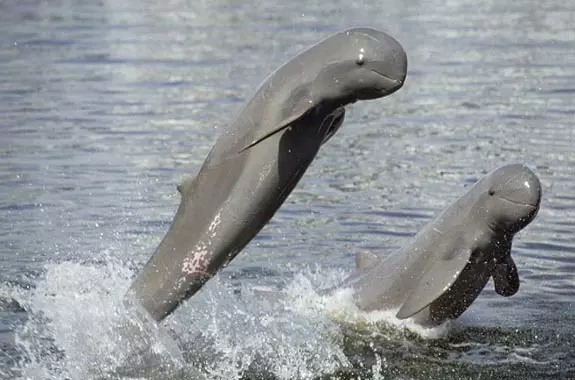
Not only do these nature camps offer visitors a chance to experience the lake’s natural beauty, but they also support conservation efforts and are committed to sustainable tourism practices. Visitors can participate in conservation and education programs that help to protect the lake’s ecosystem. And with guided nature walks and bird-watching tours.
The camps also work closely with local communities to promote sustainable tourism and improve livelihoods. And for those looking for other activities, kayaking, photography and fishing are available. The camps also offer comfortable accommodations and delicious local food, making it an ideal base for exploring the lake.
In summary, Chilika Nature Camps in Odisha is perfect for nature enthusiasts who want to experience the lake’s natural beauty while promoting sustainable tourism practices. It offers visitors the chance to spot rare wildlife, participate in conservation programs, and enjoy a comfortable stay with delicious food.
5. Eco Tourism Odisha – Debrigarh Nature Camp (Hirakud)
Debigarh Nature Camp, located in Hirakud , Odisha, is an ideal destination for those looking to explore the natural beauty of the state while also contributing to conservation efforts and supporting local communities. The camp is situated in the heart of the Debigarh Wildlife Sanctuary, an area teeming with diverse wildlife and lush vegetation.
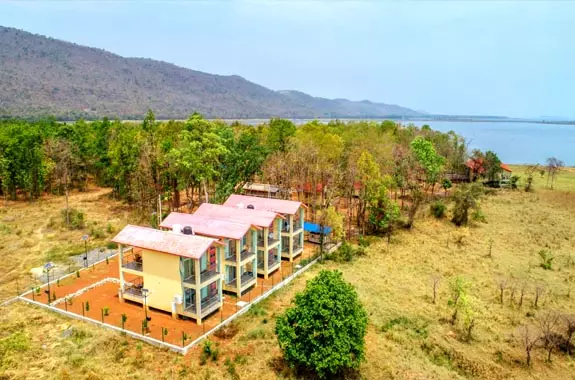
The Debigarh Wildlife Sanctuary is home to a wide range of animal species, such as tigers, leopards, elephants, and various types of deer, as well as a rich variety of plant life, including Sal and mixed deciduous forests. It is also a habitat for the Indian Gaur, a majestic bovine species that visitors can catch a glimpse of in their natural surroundings.
Visitors to the Debigarh Nature Camp can take guided jungle safaris, nature walks, and bird-watching tours to explore the sanctuary’s flora and fauna. They can also learn about the conservation efforts being made to protect the sanctuary’s ecosystem and the impact of sustainable tourism on the local community’s livelihood.
In addition to these activities, visitors can also enjoy other outdoor pursuits like trekking, rock climbing and angling. The camp provides comfortable accommodations and delicious local food, making it a perfect base for exploring the Debigarh Wildlife Sanctuary.
In conclusion, Debigarh Nature Camp is a perfect destination for nature enthusiasts looking to experience the natural beauty of Odisha while supporting conservation efforts and local communities. The camp provides visitors with an array of activities to explore the Debigarh Wildlife Sanctuary and promotes sustainable tourism practices.
Eco Tourism Odisha Online booking
You can book Eco Tourism Odisha camps via the Eco Tourism Odisha website.
Final Thoughts on Eco Tourism Odisha – Best Nature Camps in Odisha
From the breathtaking natural beauty of its beaches, forests, and wildlife to the rich cultural heritage that permeates every corner of the region, Odisha truly has something for everyone.
As someone who has had the privilege of exploring this amazing destination, I can attest to the fact that co-tourism here is not just about visiting tourist hotspots but immersing oneself in the authentic experiences that make Odisha so special.
Whether it’s savouring the local cuisine, interacting with the friendly locals, or participating in the many festivals and rituals that are an integral part of the state’s rich cultural fabric, co-tourism in Odisha is truly an emotional and unforgettable experience.
So, if you’re looking for a vacation that will leave you with memories to cherish for a lifetime, I highly recommend exploring Eco-tourism in Odisha. With its stunning landscapes, vibrant culture, and warm hospitality, this state is sure to capture your heart and leave you wanting more.
Don’t miss out on the opportunity to discover the hidden gems and unique experiences that await you in this incredible destination.
FAQs on Eco Tourism Odisha – Best Nature Camps in Odisha
What is eco-tourism in odisha.
Eco-tourism in Odisha is a type of responsible travel that is focused on preserving the environment and promoting the well-being of local communities. It includes visiting natural and cultural heritage sites and participating in activities such as birdwatching, wildlife viewing, and cultural tours.
What are the popular Eco-tourism destinations in Odisha?
Popular eco-tourism destinations in Odisha include the Chilika Lake, Bhitarkanika National Park, Similipal National Park, Satkosia Gorge, Debigarh Wildlife Sanctuary and other nature camps.
What kind of activities can visitors expect at Eco-tourism camps in Odisha?
Visitors can expect a wide range of activities at eco-tourism camps in Odisha, including guided jungle safaris, nature walks, bird watching, boat tours, kayaking, photography, fishing, trekking, and rock climbing, and turtle nesting.
Are the Eco-tourism camps in Odisha committed to sustainable practices?
Yes, the eco-tourism camps in Odisha are committed to sustainable practices such as using eco-friendly transportation and promoting conservation education. They also work closely with local communities to promote sustainable tourism and to improve their livelihoods.
Are there any government policies and programs to promote sustainable tourism development in Odisha?
Are there any government policies and programs to promote sustainable tourism development in Odisha? Yes, the Odisha government has implemented policies and programs to promote sustainable tourism development in the state, including the development of eco-tourism sites and nature trails. They are actively promoting eco-tourism in the state to attract more visitors.
Hello, I am Rajesh, an avid traveller and explorer with a passion for all things in Odisha. With years of experience traversing the length and breadth of this beautiful state.
As the founder and primary author of Incredible Odisha, I am dedicated to sharing my love for Odisha with the world. From the stunning beaches of Puri to the ancient temples of Bhubaneswar, I have explored every nook and cranny of this fascinating state and I am committed to providing the most comprehensive and up-to-date information to fellow travellers.
Whether you're a first-time visitor to Odisha or a seasoned traveller looking for off-the-beaten-path adventures, I have you covered.
With a wealth of knowledge and insider tips, I am dedicated to helping travellers experience the very best that Odisha has to offer.
So, join me on an unforgettable journey through the vibrant and diverse state of Odisha, and discover the magic and beauty of this hidden gem for yourself.
Similar Posts
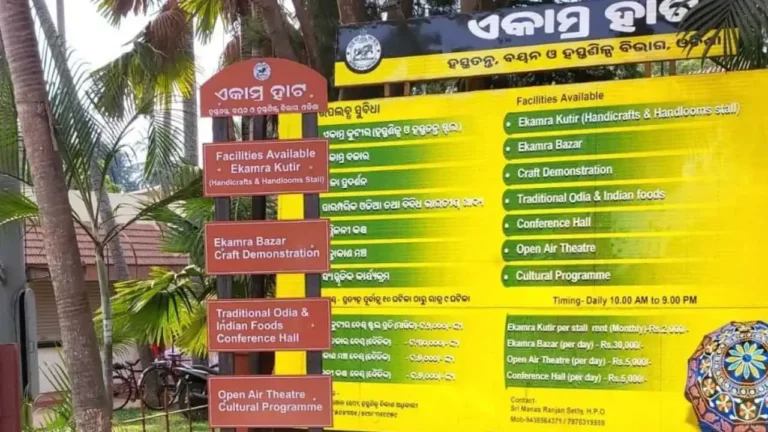
Ekamra Haat Bhubaneswar Location, Timings, and Exhibitions
Explore Ekamra Haat Bhubaneswar | Details of Location, opening and closing time, Festivals, Handicrafts, Handlooms, Food and Exhibition details.

International Trade Fair Bhubaneswar 2023 – Full Details, Location, Date and Online Tickets
Full details of International Trade Fair Bhubaneswar 2023 including date, time and location. | Details on online ticket booking and mega trade fair
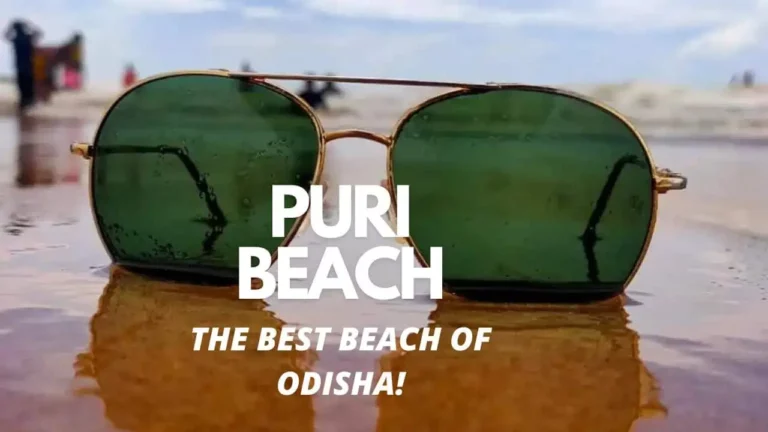
Puri Beach, Golden Beach, Blue Flag Beach, Things to do, Water Sports, and Festivals
Explore Puri Beach, Golden Beach and Blue flag beach | Things to do at Puri beach, Food, Water sports, hotels and resorts | Places to visit
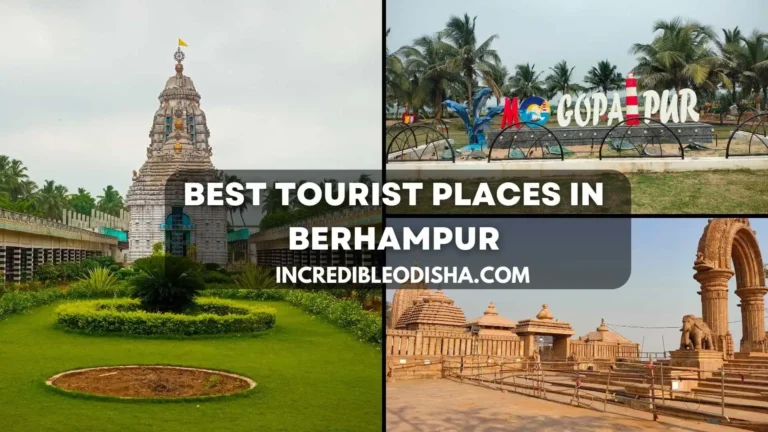
Best Tourist Places in Berhampur: Beaches, Temples, Waterfalls and More
Full Details of Best Tourist Places in Berhampur Beaches, Temples, Waterfalls | Best Time to Visit Berhampur, Shopping places and Food
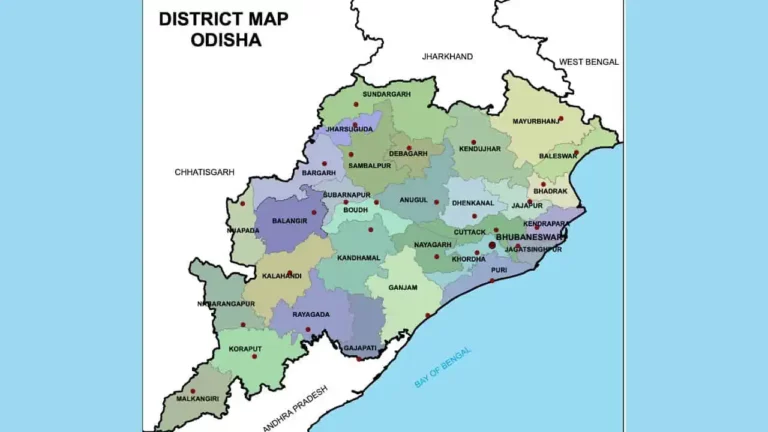
Odisha Map: Best Tourist Destinations, River, Road, and Rail Networks
Odisha Map covering Road Network, Rail Network, Major Rivers, Airports, Blocks, Urban Areas and Tourist destinations | Odisha Demographics
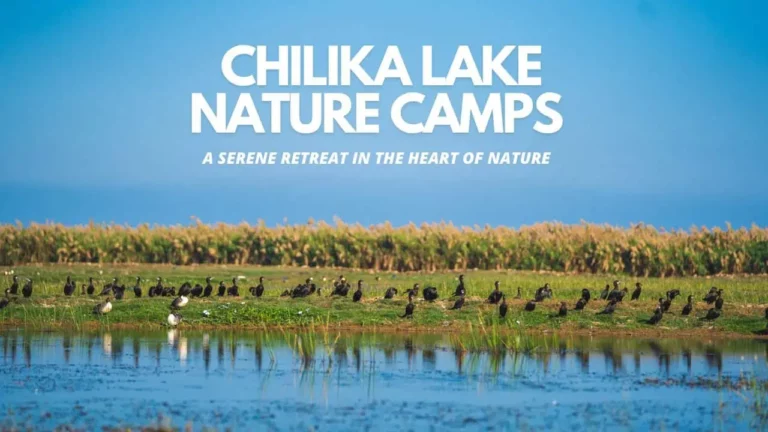
Chilika Lake Nature Camps – Rajhans, Berhampura and Mangalajodi
Explore Chilika Lake Nature Camps | Details on Rajhans, Berhampura and Mangalajodi | Location, How to reach, Activities, Price, and Booking
Leave a Reply Cancel reply
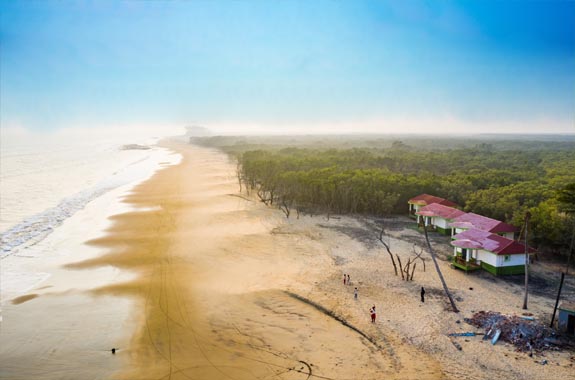
Bhitarkanika Nature Camp
Bhitarkanika National Park: Eco Tourism and Forest Accommodation
Highlights : Eco Tourism Odisha, Eco tours Odisha India, Bhitarakanika National Park, Nature Tourism, Forest Cottage Accommodation, Community Tourism Odisha, Green Tourism Odisha, National Park Tourism Odisha, Crocodile Tourism Odisha India, Camping at Bhitarakanaika National Park, Forest Stay, Crocodile Hunting Ground Stay, Boat Library at Dangmal.
How to Reach:
Location: Bhitarkanika National Park, Kendrapada, Odisha
Nearest Airport: Bhubaneswar
Distance From Airport: 175 Kms
Nearest Railway Station: Bhadrak
Distance from Railway Station: 56 Km
Bhitarkanika is a National Park situated in the eastern coast of Bay of Bengal. It spreads over an area of a 650 square kilometer in Kendrapara district. Bhitarkanika comprises of Bhitarkanika National Park, Bhitarkanika Wildlife Sanctuary & Gahirmatha Marine Sanctuary. The second largest mangrove forest of the country, it was declared a sanctuary in 1975, in order to protect the estuarine crocodile and the turtles in their rare mangrove habitat. Other residents of the sanctuary include water monitor lizards and king cobras. About 62 different kinds of mangroves are found in the estuarine soil of the Bhitarakanika sanctuary. Naturally Mangrove trees are grown in the submerged salty tidal forest areas. Mangrove forest is the favorite habitat of shrimps and prawns, which are produced in large scale for commercial purposes in these localities.
Famous for:
Estuarine Crocodiles
Migratory birds
Olive Ridley Sea Turtles
Virgin stretching beaches
Lush green mangroves
Wildlife Sanctuary
Water sport
Jungle cottages
Marine Life
Nature`s trails
Never ending Creeks
Forest Stay / Jungle Accommodation
Dangamal Nature Camp
It is located inside the Bhitarkanika Natinal Park.
Guests can reach Dangamal by boat from Gupti and Khola of they can also reach by road via Rajnagar and Khola entry point.
From here you can visit to the Dangamal museum.
Boat library for Children at Dangamal to study on numerus subjects
It has 5 types of rooms,
- Bani Bhawan – Four bedded 2 Room(Non- AC)
- Hental House – Three Bedded 1 Room (Non-AC)
- Sundari Bhawan- Double Bedded 3 Rooms (AC)
- Heron House- Double Bedded 8 Rooms (AC)
- Cheetal Cottage - Double Bedded 2 Rooms (AC)
All the rooms have modern facilities and designed in a unique style.
Habalikhati Nature Camp
This nature camp is a beach resort
It locates on the beach inside the Bhitarkanika National Park.
From here visitors can see hundreds of Dolphins marching in sea.
On the turtle hatching time Olive riddle turtles came here to lay their eggs.
Guests can reach here by boat from Gupti.
All the luxurious rooms are sea facing and have modern amenities.
This nature camp has 4 types of room.
- Tent – Double Bedded 4 Rooms (Non-AC)
- Habli Bhawan- Four bedded 1 Room(Non- AC)
- Habali Bhaban Type 2- Four bedded 1 Room(Non- AC)
- Dolphin House - Double Bedded 4 Rooms (Non-AC)
Gupti Nature Camp
This nature camp locates on the banks of Patasala River, inside the forest of Bhitarkanika National Park.
It is the entry point of the National Park.
This nature camp has 6 rooms with all the modern facilities and designed in a unique style.
Facilities:
Room – 32 Rooms
Dining hall
Toilet & Bathroom
Parking Place
Local Odia Foods
Things to do:
Boating
Forest Trekking
Crocodile Watch
Dolphin Watch
Olive Riddle turtles watch (When the turtles came to Odisha for hatching)
Visit to Dangamal Museum
Animal Sightseeing
Birding
Nature Photography
Star Gazing
Highlights
Responsible Tourism
Sustainable Tourism
Village Tourism
Rural Tourism
Countryside Tourism
Offbeat Tourism
Vocal For Local Tourism
Agro Tourism
Community Tourism
Experience Tours
Engage With Local Communities
Nature Tours
Tariff:
DBL Occupancy: Rs 3712 to Rs 5800
Extra Person: Rs 1200
Inclusion: Breakfast, Lunch & Dinner
For booking please call us at 9777784335 or mail us [email protected]
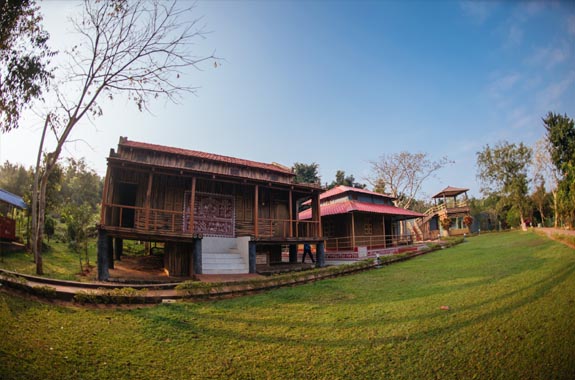
Chandaka Eco Tourism
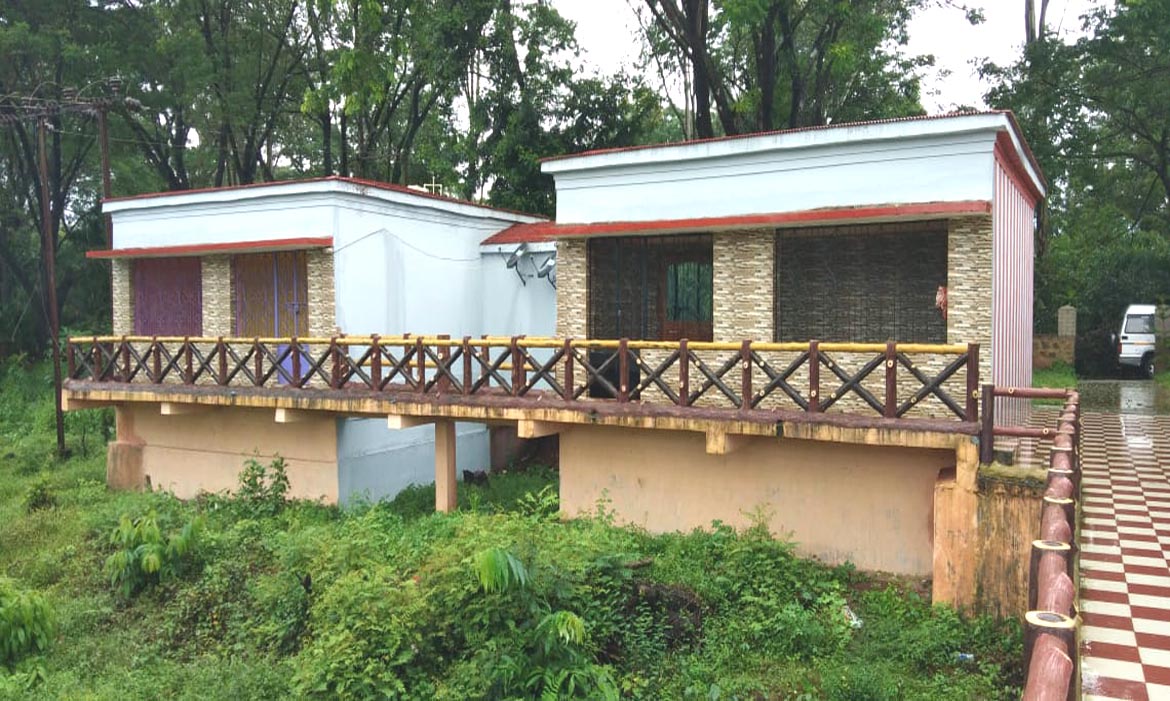
Chitrakonda Nature Camp
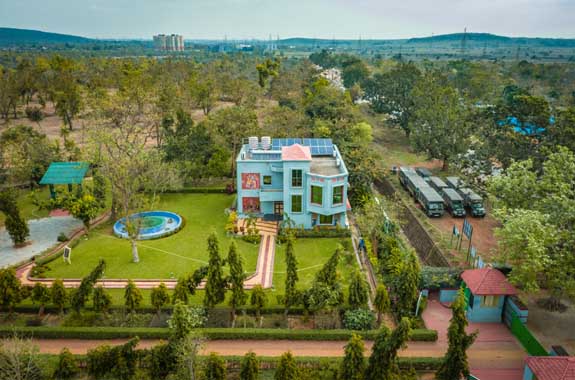
Chandaka Nature Camp
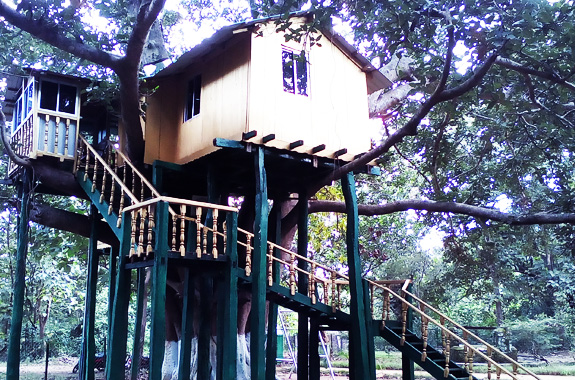
Giant Squirrel Nature Camp
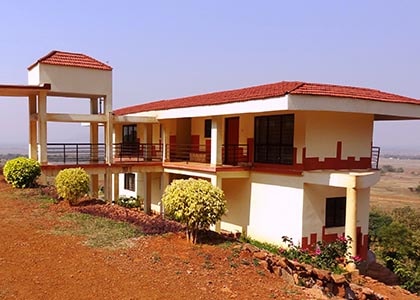
Mahabinayak Nature Camp
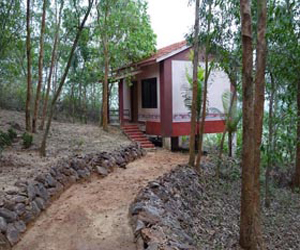
Olasuni Nature Camp
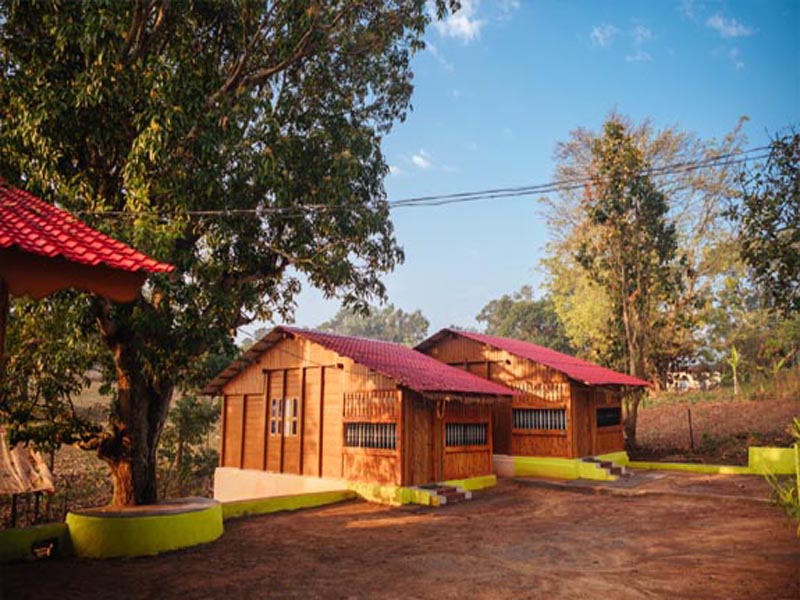
Phulbani Nature Camp
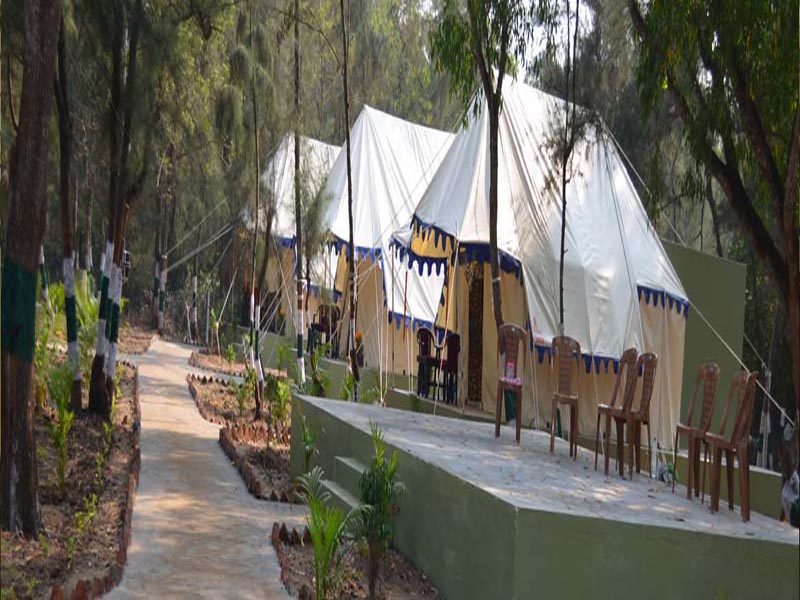
Nuanai Nature Camp
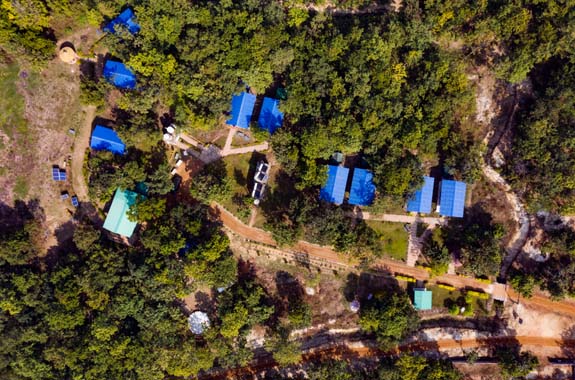
Rissia Nature Camp
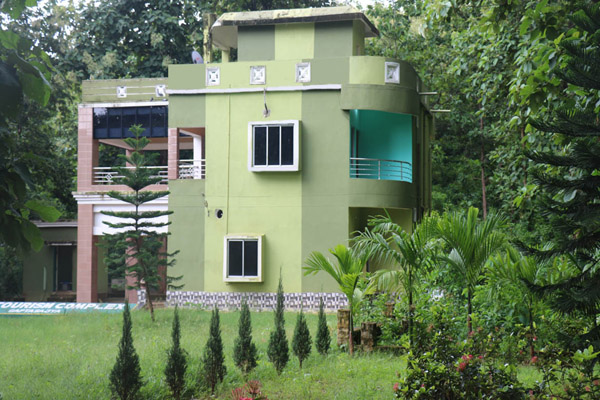
Saptasajya Nature Camp
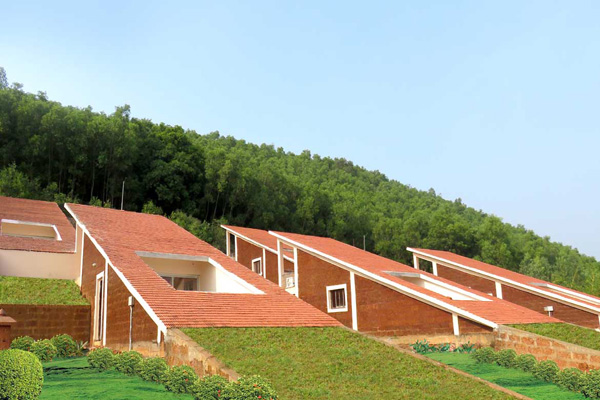
Chilika Nature Camp
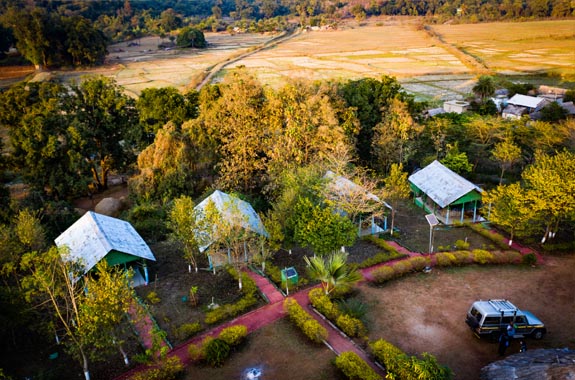
Satkosia Nature Camp
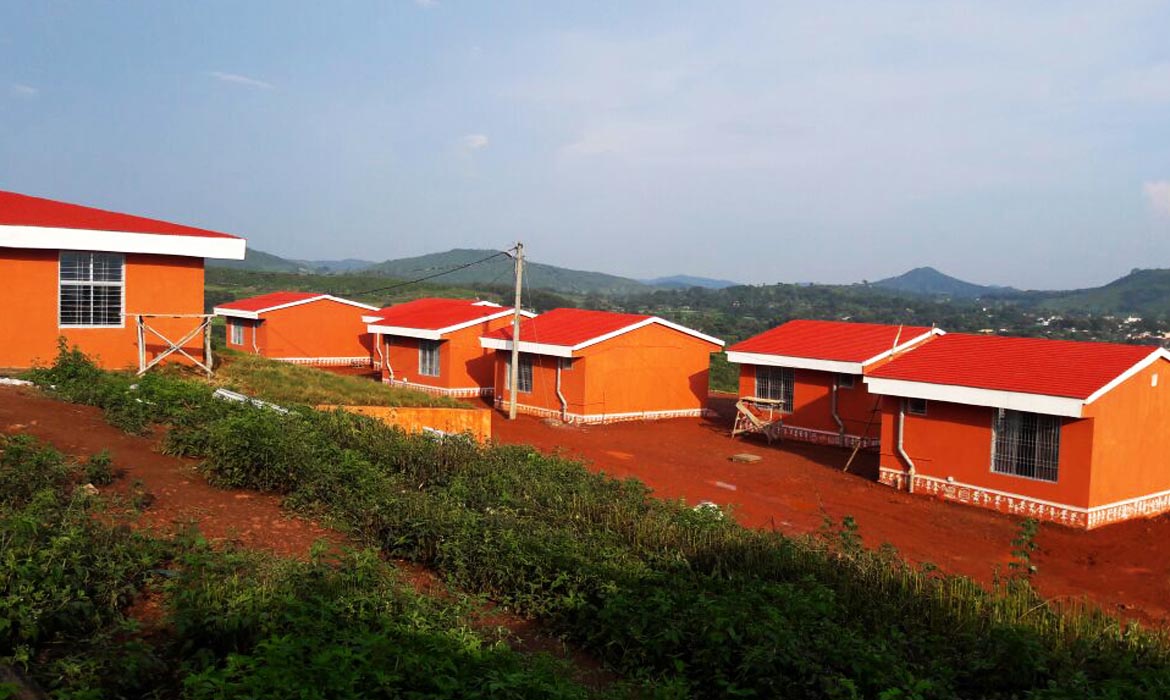
Daringbadi Nature Camp
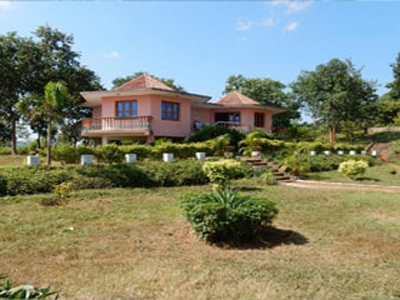
Sidhamula Nature Camp
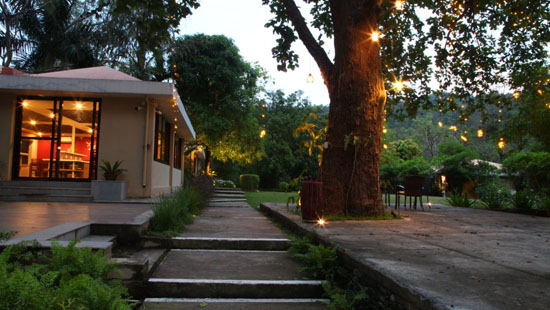
Odisha Luxury Forest Resort
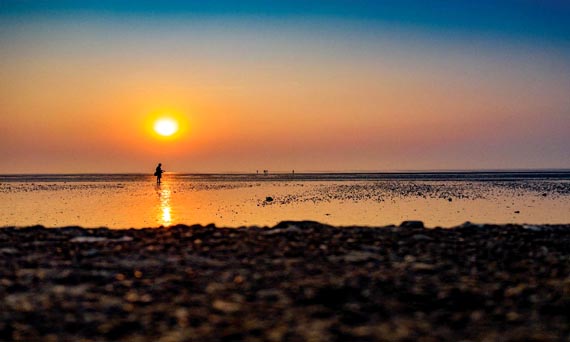
Chandipur Nature Camp
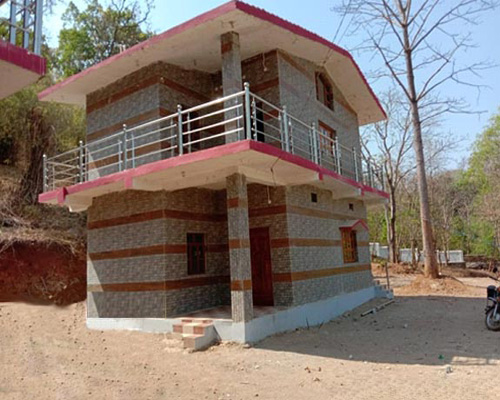
Satiguda Nature Camp
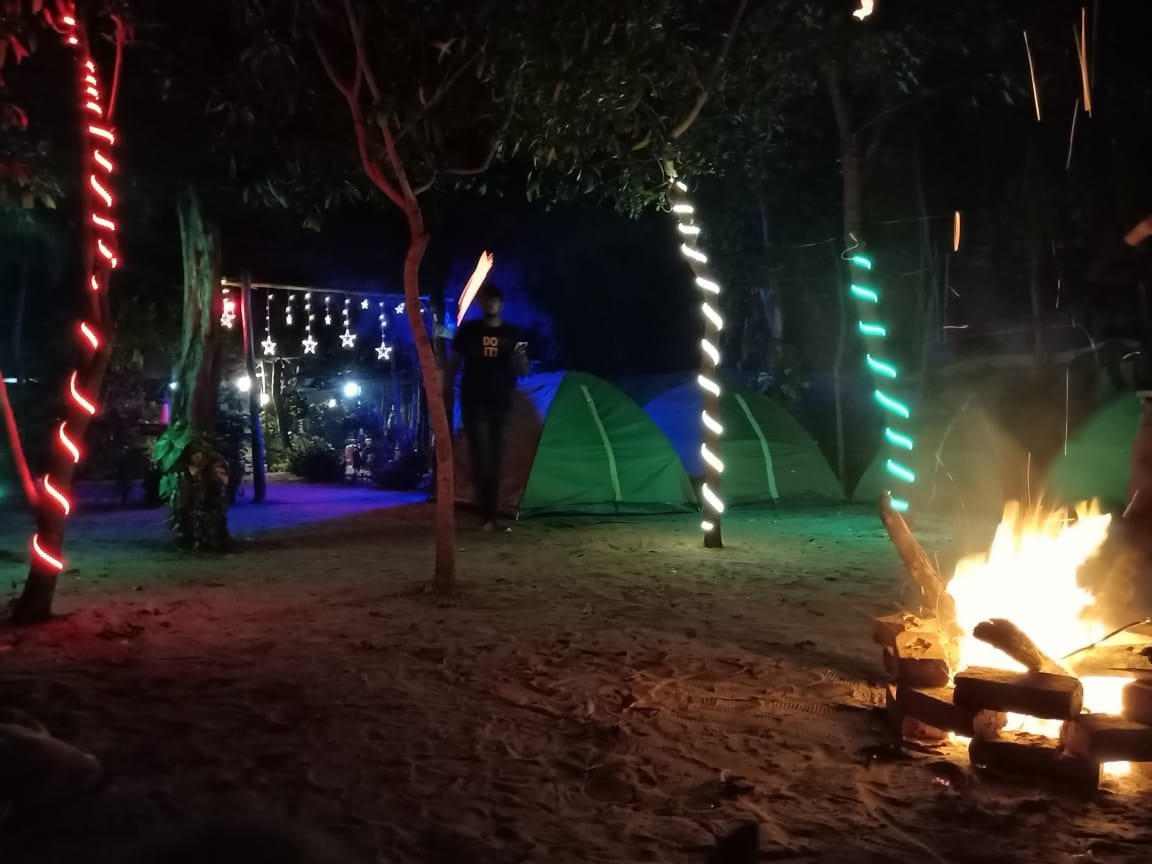
Camping-Hiking-Daringbadi
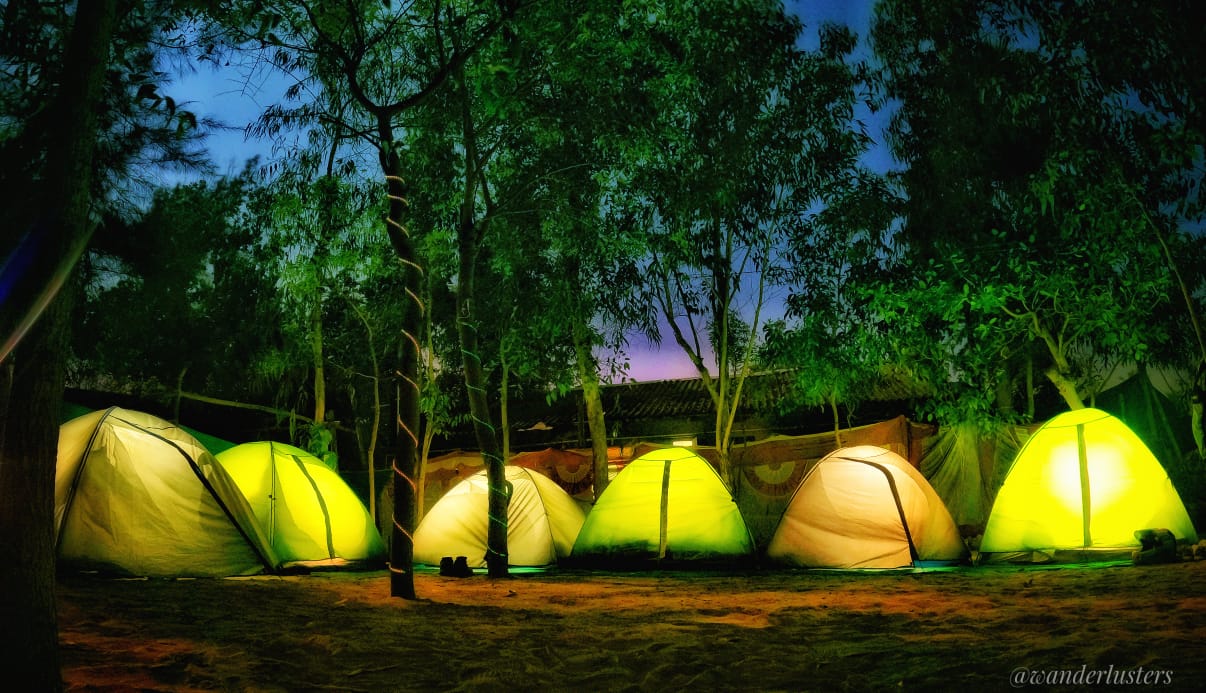
Camping-MarineDrive-Puri

Maritime-Odisha-Camping
Camping-hiking-kapilash-sanctuary, camping-hiking-remuna-keunjhar, camping-hiking-chilikalake, beach-camping-hiking.
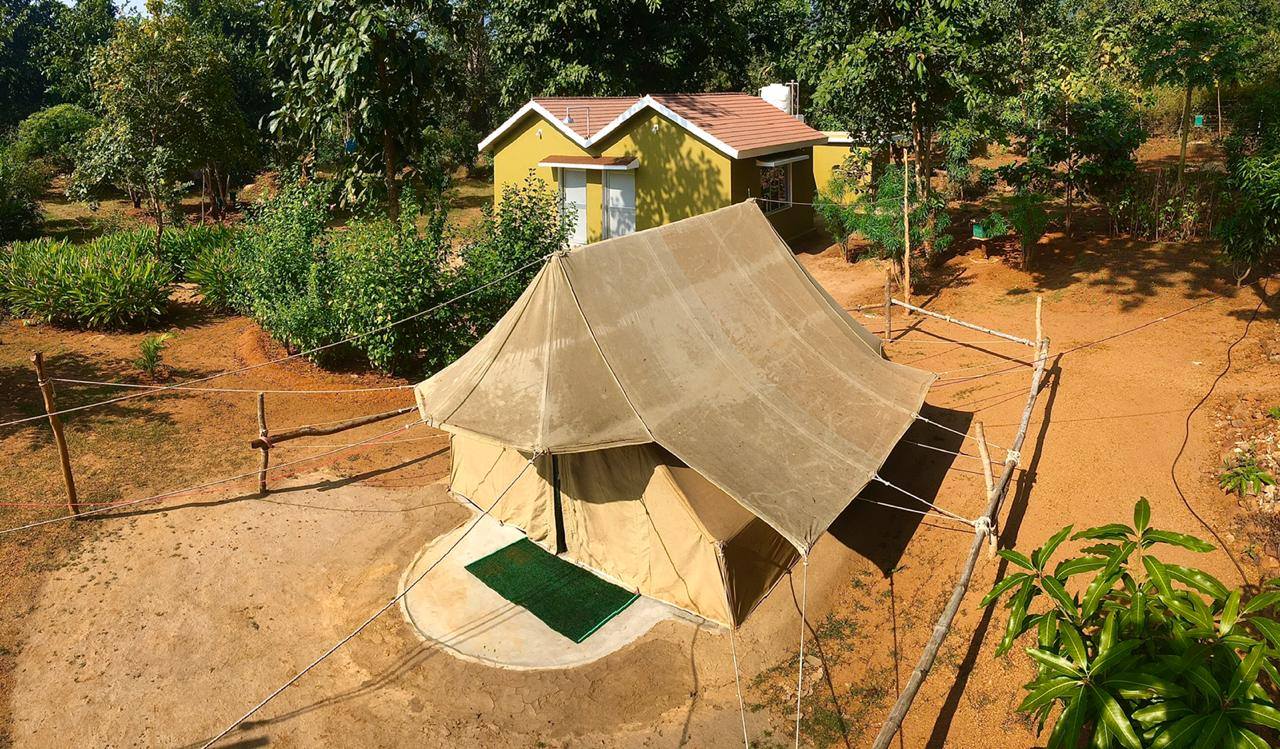
Camping-Hiking-Athmallik-Forest
Hari-shankar-nature-camp, saptasajya-camping-hiking-trekking-site.
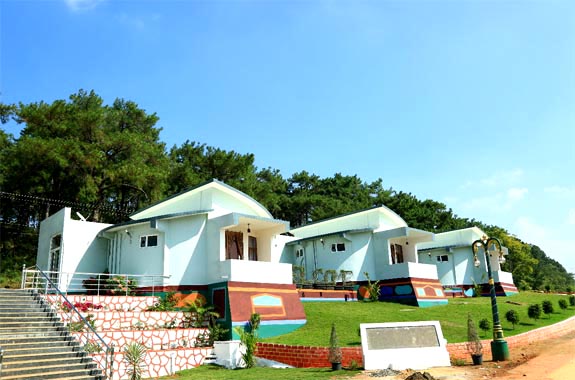
Koraput_Nature_Camp
Shimilipal forest cottage.
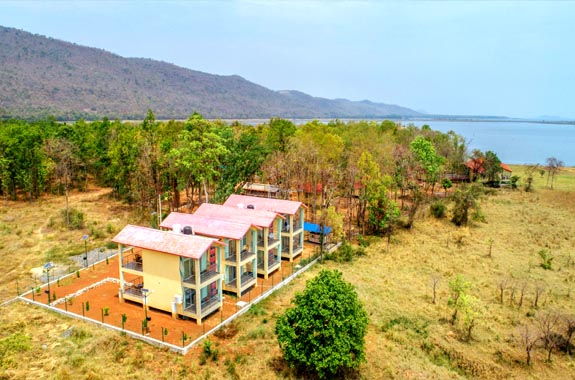
Debrigarh Nature Camp
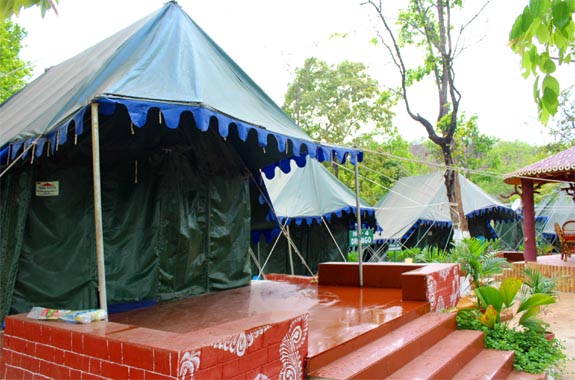
Sarafgarh Nature Camp
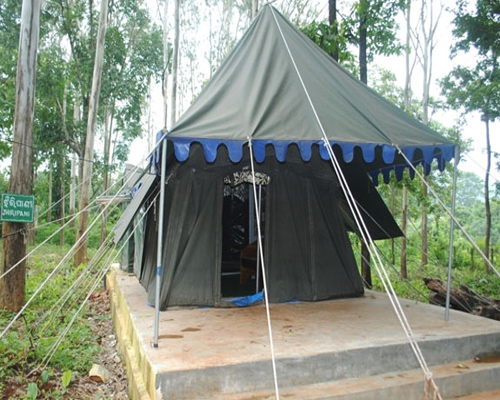
Belghar Nature Camp
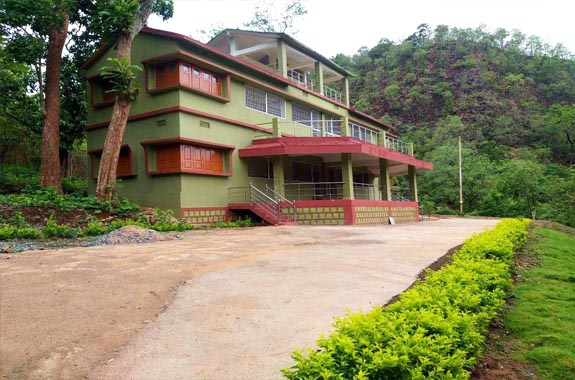
Nrusinghanath-Nature-Camp
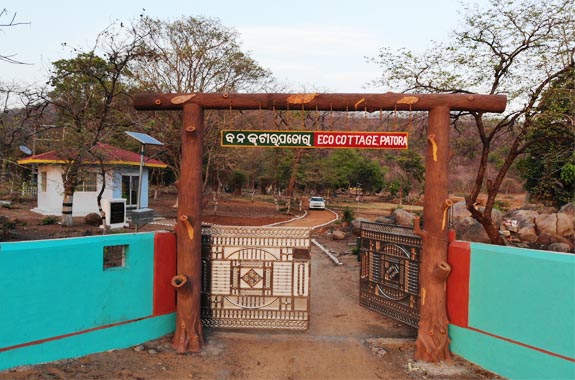
Patora Nature Camp
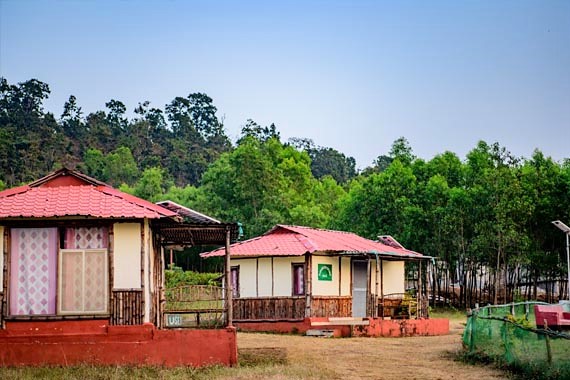
Kumari-Nature-Camp
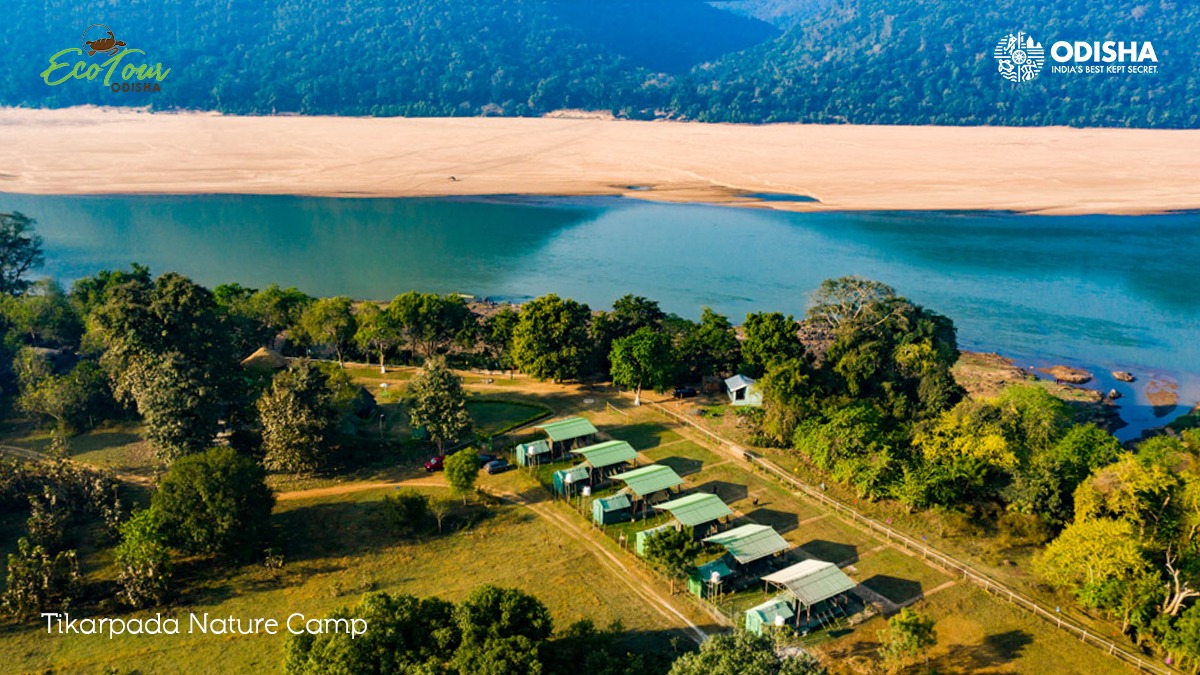
Tikarpada Nature Camp
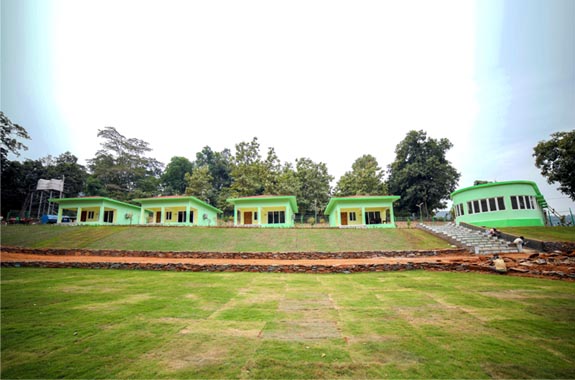
Khandadhar Nature Camp
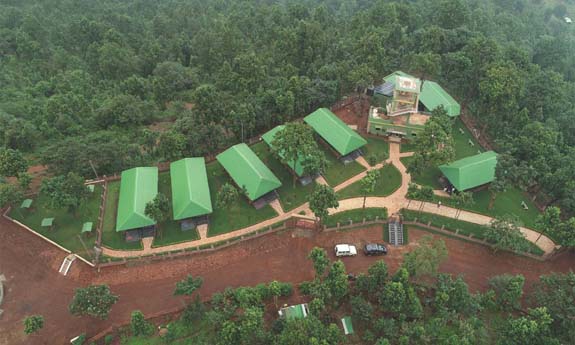
Tensa Nature Camp
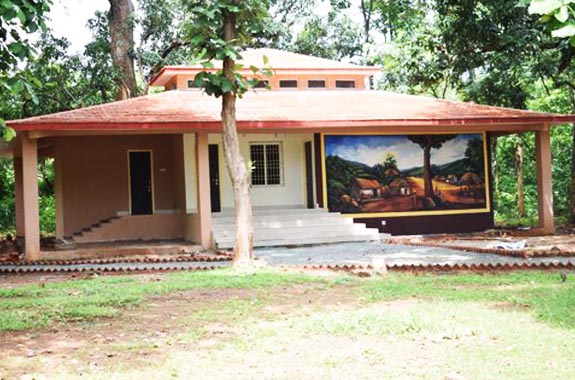
Sanaghagara Nature Camp
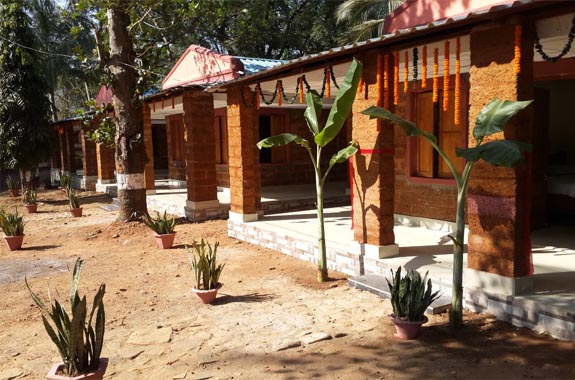
Berbera Nature Camp
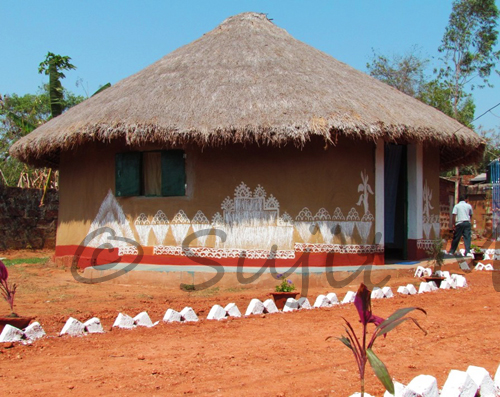
Mud House Stay Odisha
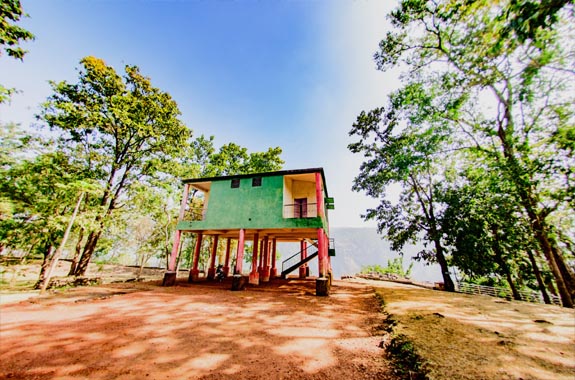
Similipal-Nature-Camp

Pet-Friendly-Odisha-Tours-Hotels
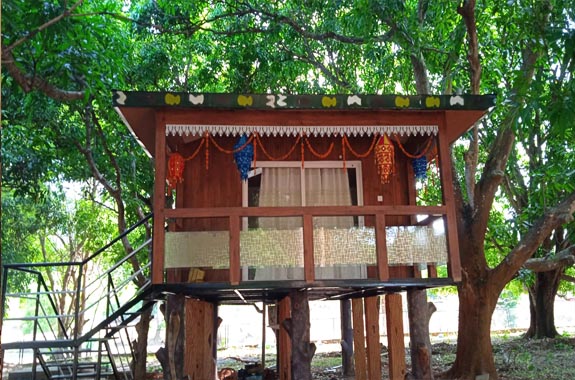
Tree-House-Stay-Odisha-Forest
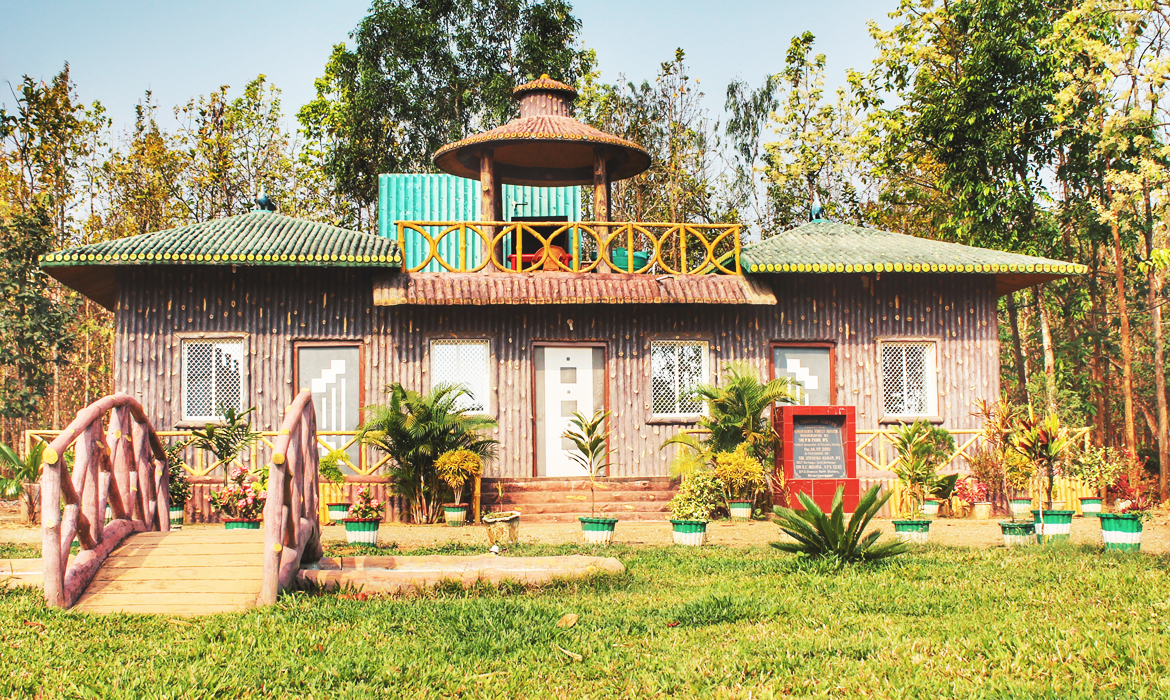
Blackbuck-Nature-Camp-Odisha
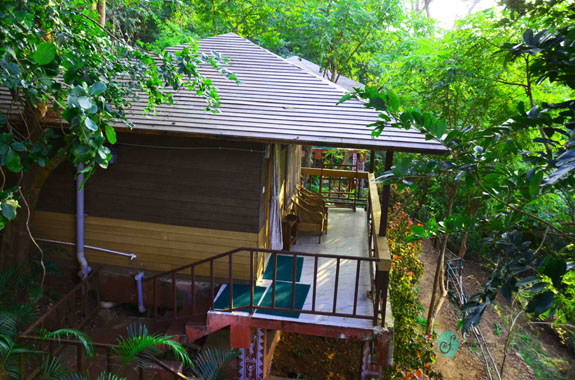
Badmul Nature Camp
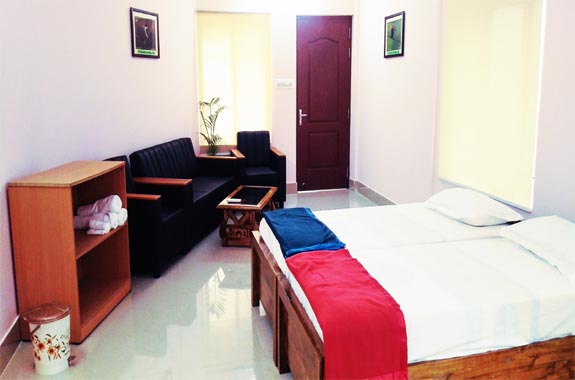
Bichitrapur-Nature-Camp
Snake rescue tour odisha.
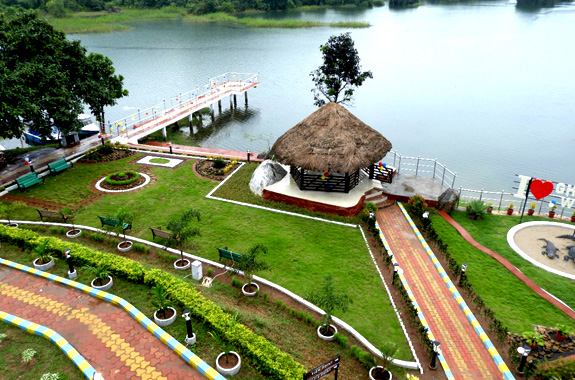
Ghodahada Nature Camp
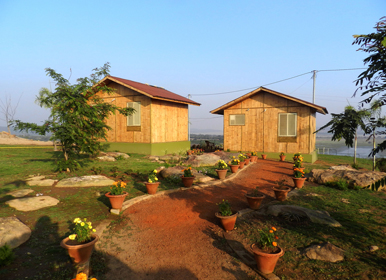
Ansupa Nature Camp
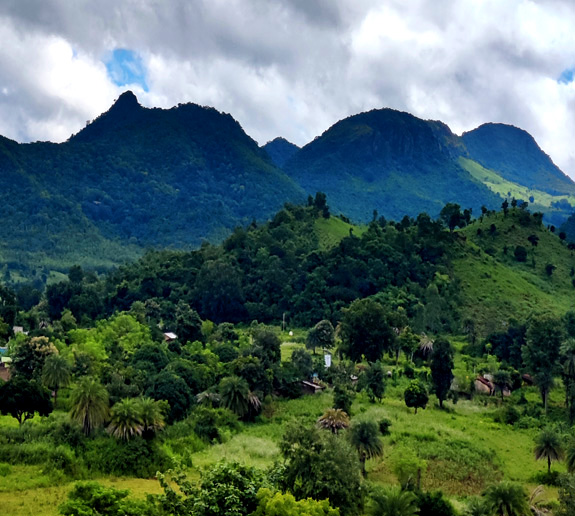
Kalahandi Nature Camp Eco Tourism
Kotia nature camp koraput, jakam nature camp kalahandi, nawana natue camp shimilipal, silviculture garden nature camp phulbani, khadakhai dam nature camp, mahendragiri nature camp, khanjipani nature camp.
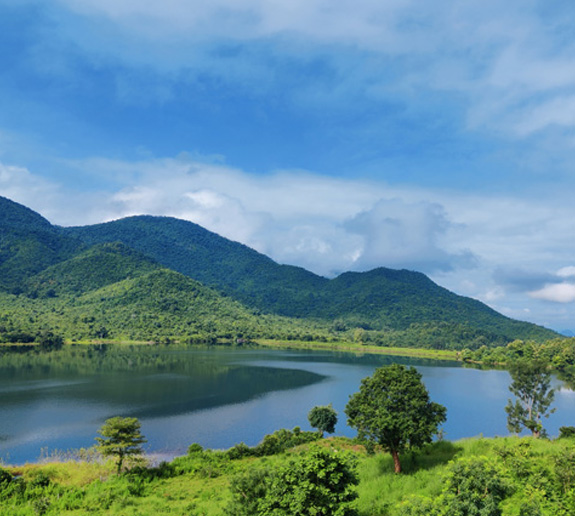
Rabandhara Nature Camp
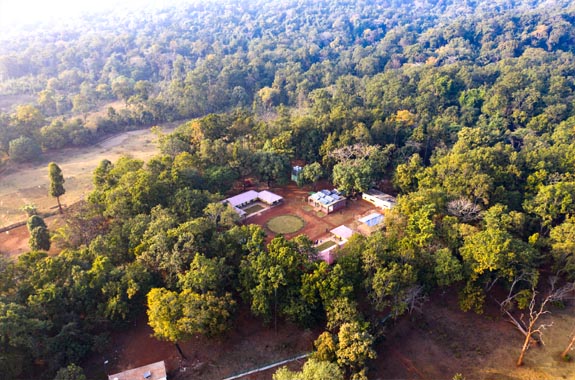
Barehipani-Nature-Camp-Shimilipal
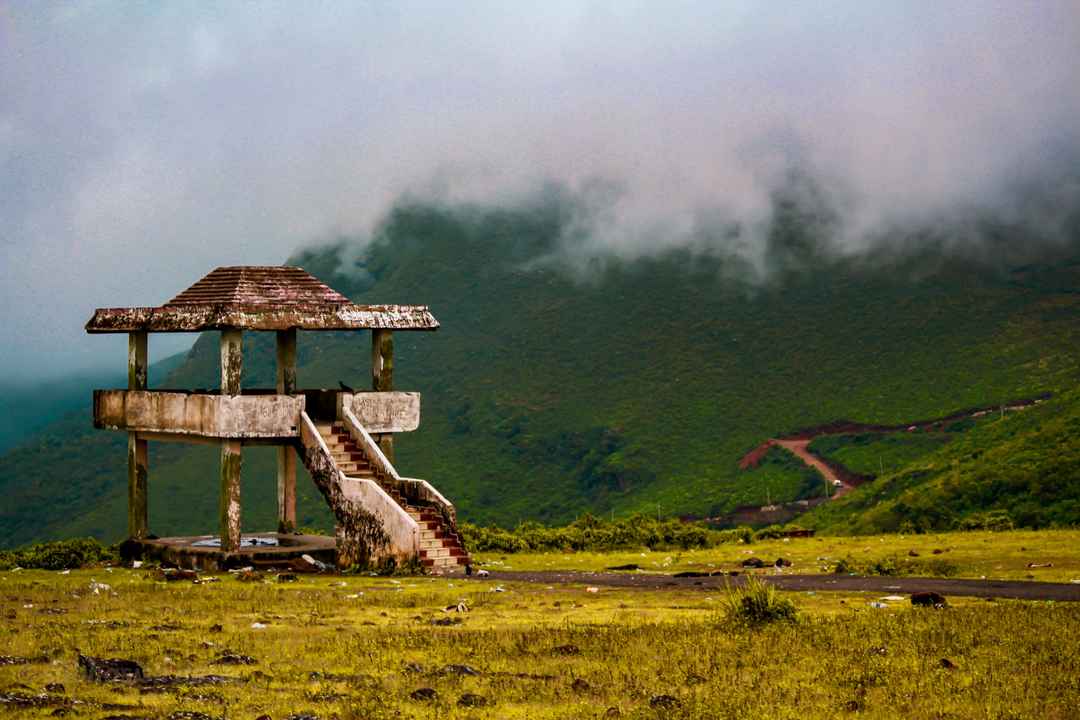
Deomali-Nature-Camping-Koraput
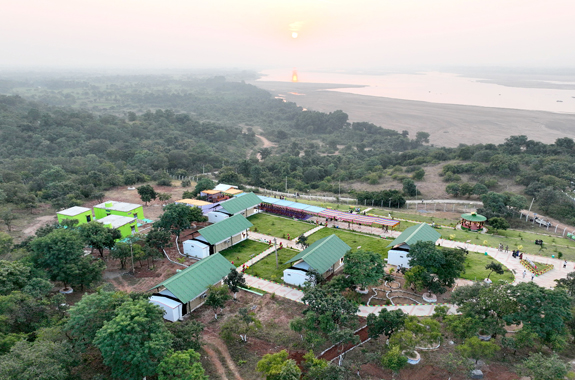
Boudh-Nature-Camp
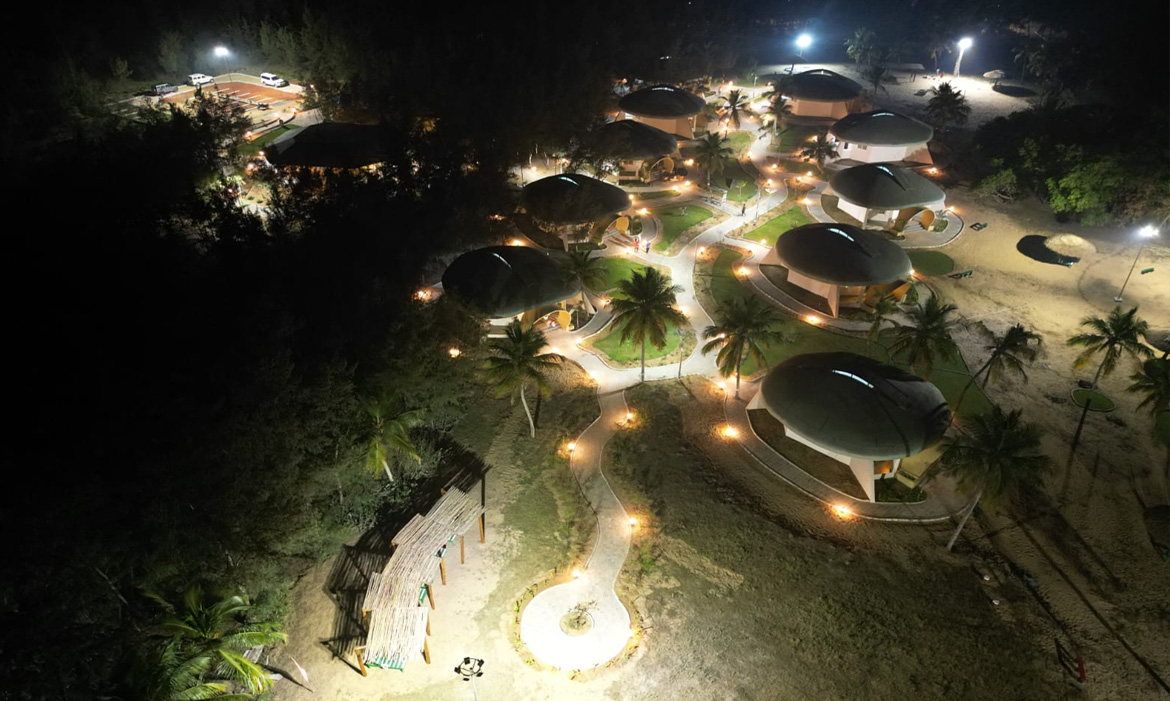
Astaranga Nature Camp
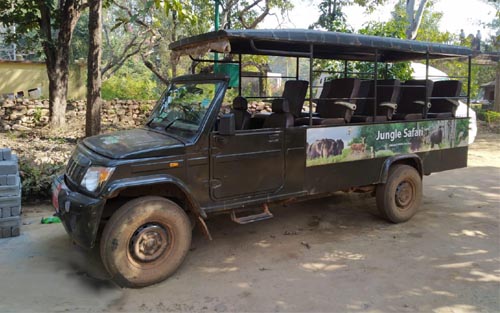
Wildlife Safari Odisha
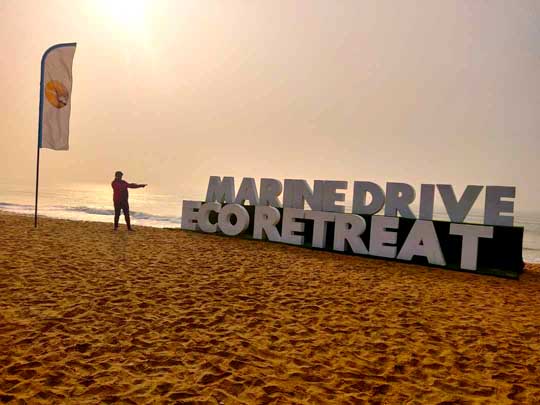
Eco-Retreat-Konark-booking

Eco-Retreat-Bhitarakanika-Booking
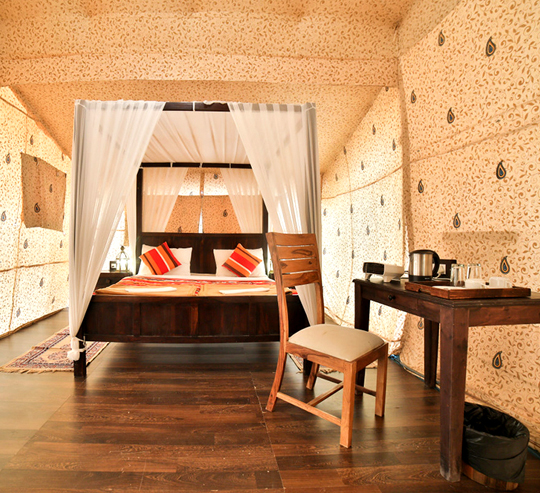
Eco-Retreat-Koraput-Booking
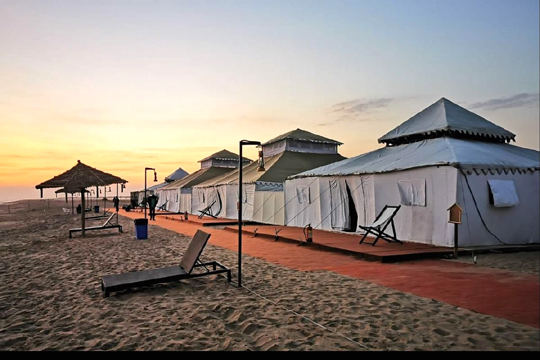
Eco-Retreat-Ganjam-Booking
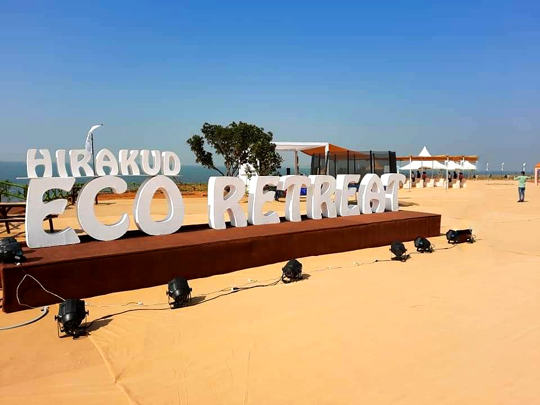
Eco-Retreat-Hirakud-Booking
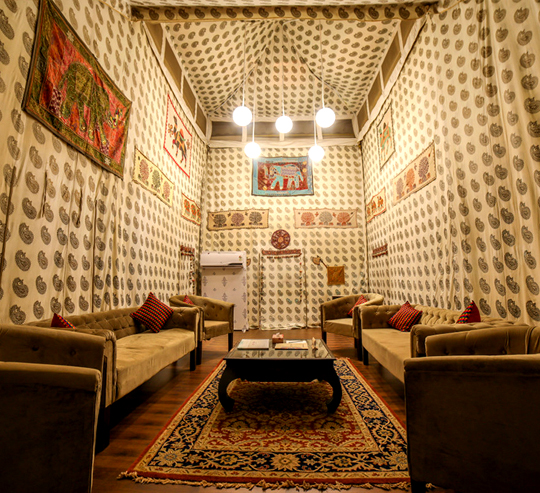
Eco-Retreat-Satkosia-Booking
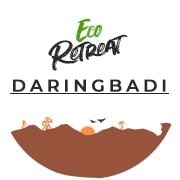
Eco-Retreat-Daringbadi-Booking
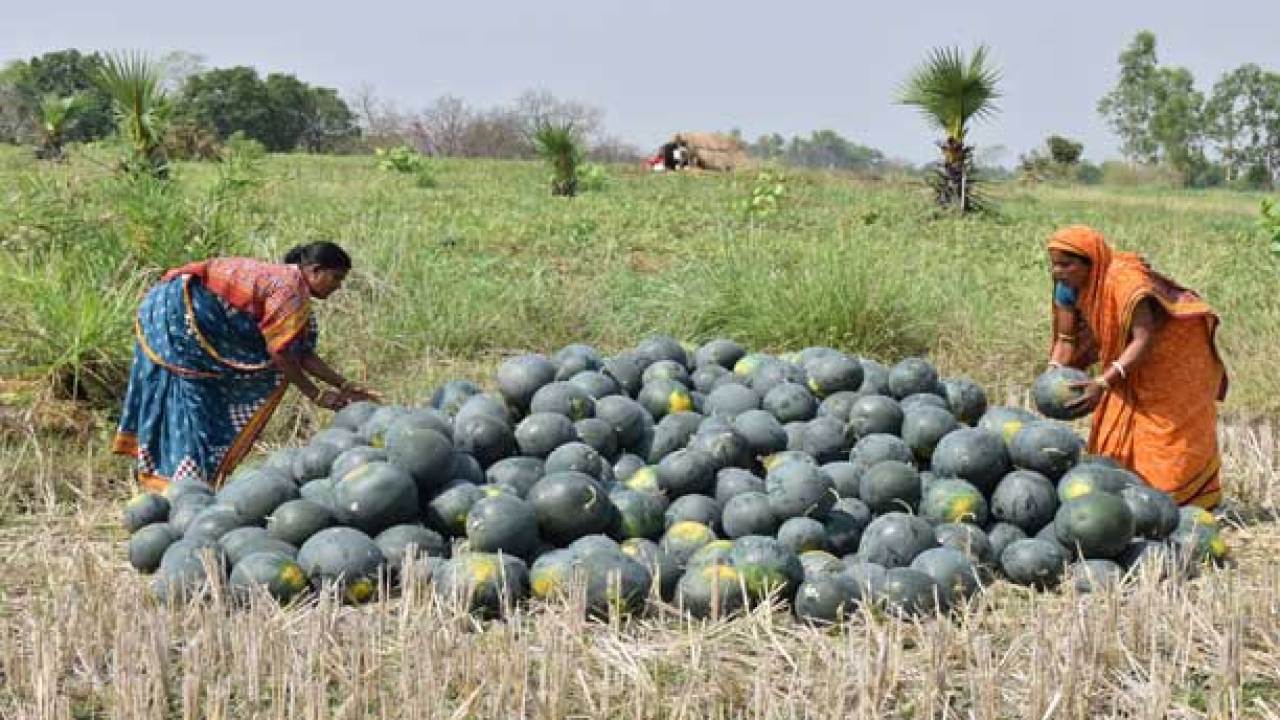
Farm Tourism Odisha
- Reservation Policy
- Room & Amenities
- Package Tours
- Special Offers
- Privacy Policy

- +91 9937027574
Bhitarkanika National Park

Book Your Stay Now
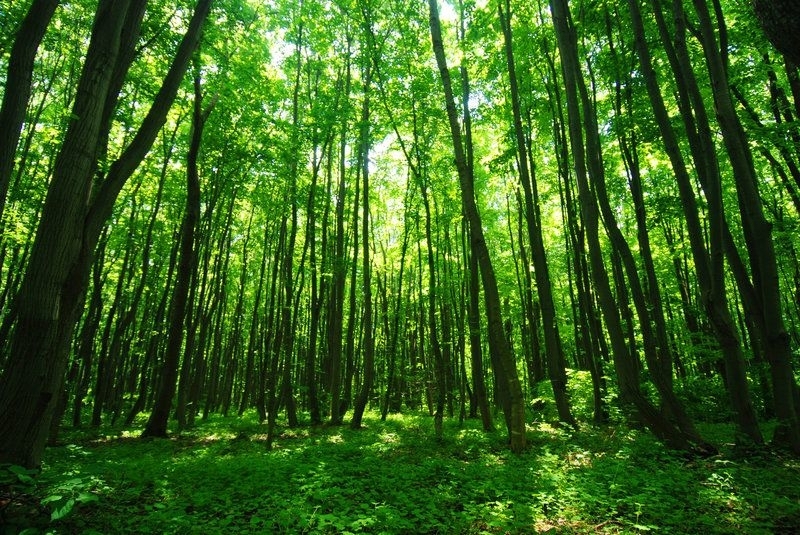
Mini Amazon of India
Nestled amidst the beauty of Bhitarkanika's three protected areas - Bhitarkanika National Park, Bhitarkanika Wildlife Sanctuary our resort is a h eaven of tranquillity. Dive yourself in the serene ambiance, where the symphony of nature replaces the urban cacophony. Bhitarkanika Wildlife Sanctuary extends over an area of 672 sq kms. An area of 145 sq kms declared as Bhitarkanika National Park in 1998. We ensure a comfortable stay with all essential amenities, making it the perfect getaway from the hustle, traffic, noise, and pollution. Surrounded by Baitarani, Dhamra and Brahmani rivers, it has a unique biodiversity that attracts visitors from all over the globe.
Rooms & Suites
Our property has around 17 Rooms that fall into five categories. View All Rooms
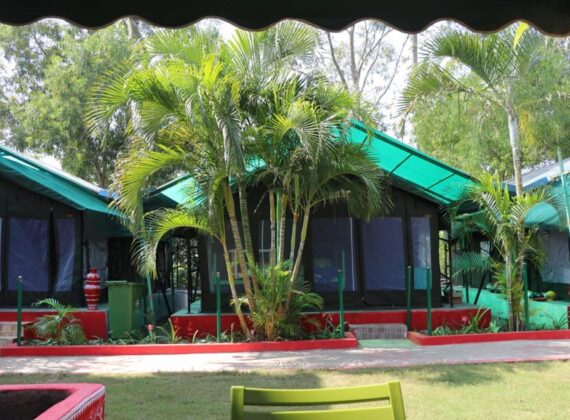
Deluxe AC Tent


Deluxe Non-AC Tent

Premium AC Tent
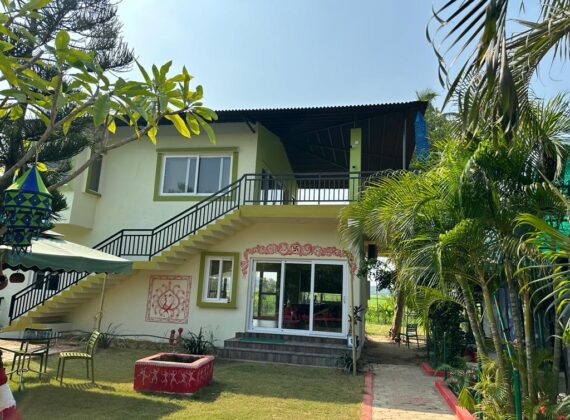
Make Your Stay Memorable
Book your boat now, tour packages.

Heaven of Migratory Birds Tour
1-Night/2-Day (BKNP 01)

Experience the Mini-Amazon Tour
3-day /2-Night (BKNP 02)

Green Peace Eco System Tour
4-Day/3-Night (BKNP 03)

Bhitarkanika - Baladevjew Tour
2-Day/1-Night (BKNP 04)

Bhitarkanika - Diamond Triangle Tour
3-Day/ 2-Night (BKNP 05)

Bhitarkanika and Habalikhati Beach Tour
4-Day, 3-Night (BKNP 06)
Transfer From Airport to Bhitarkanika
Offers & news.

Hotel June’s Upcoming Artist in Residence
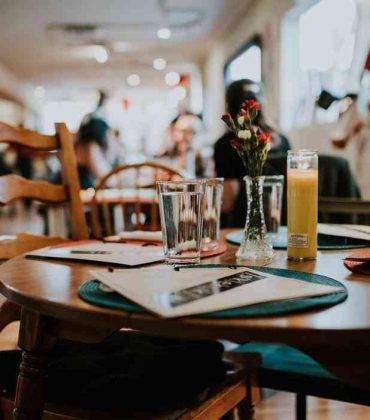
Cottonwood Cove established Resort & Marina
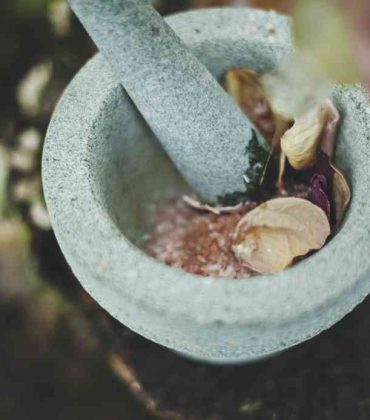
Benefits of Having Online Registration at Your Hotel
Customer experience.
Check Availabity
Open Access is an initiative that aims to make scientific research freely available to all. To date our community has made over 100 million downloads. It’s based on principles of collaboration, unobstructed discovery, and, most importantly, scientific progression. As PhD students, we found it difficult to access the research we needed, so we decided to create a new Open Access publisher that levels the playing field for scientists across the world. How? By making research easy to access, and puts the academic needs of the researchers before the business interests of publishers.
We are a community of more than 103,000 authors and editors from 3,291 institutions spanning 160 countries, including Nobel Prize winners and some of the world’s most-cited researchers. Publishing on IntechOpen allows authors to earn citations and find new collaborators, meaning more people see your work not only from your own field of study, but from other related fields too.
Brief introduction to this section that descibes Open Access especially from an IntechOpen perspective
Want to get in touch? Contact our London head office or media team here
Our team is growing all the time, so we’re always on the lookout for smart people who want to help us reshape the world of scientific publishing.
Home > Books > Protected Area Management - Recent Advances
Development of Eco-Tourism Vis-à-Vis Conservation Measures for Protecting the Endangered Species of Flora and Fauna: A Study on Bhitarkanika National Park and Wildlife Sanctuary, Odisha, India
Submitted: 31 August 2021 Reviewed: 05 January 2022 Published: 21 February 2022
DOI: 10.5772/intechopen.102502
Cite this chapter
There are two ways to cite this chapter:
From the Edited Volume
Protected Area Management - Recent Advances
Edited by Mohd Nazip Suratman
To purchase hard copies of this book, please contact the representative in India: CBS Publishers & Distributors Pvt. Ltd. www.cbspd.com | [email protected]
Chapter metrics overview
412 Chapter Downloads
Impact of this chapter
Total Chapter Downloads on intechopen.com
Total Chapter Views on intechopen.com
Bhitarkanika is the second largest mangrove ecosystem in India after the Sundarbans National Park and is situated in the state of Odisha. It is the home of diverse flora and fauna that are intricately linked with each other. Bhitarkanika comprises lots of endangered species of flora and fauna that needs immediate attention by different stakeholders especially the government and NGOs for conservation and preservation of these diverse resources. The present study is focused on identifying various eco-tourism resources available at this destination and also analyse various protection measures undertaken to conserve and preserve the flora and fauna inside the sanctuary. This study also examines the role of government for conservation and preservation of eco-tourism resources inside Bhitarkanika. The current study reveals that Bhitarkanika Wildlife Sanctuary have immense tourism potentials to become a perfect eco-tourism destination. However, in spite of that, this destination has not been extensively promoted and marketed as a perfect eco-tourism destination in this region. Since this area provides a huge employment opportunity for the local community, so there is an urgent need to conserve and preserve this sanctuary for a better eco-tourism destination in the years to come.
- Ramsar sites
- endangered species
- mangrove Forest
Author Information
Dillip kumar das *.
- Department of Tourism Management, The University of Burdwan, Burdwan, West Bengal, India
*Address all correspondence to: [email protected]
1. Introduction
Bhitarkanika is one of the finest wildlife sanctuaries in Asia, the second-largest mangrove ecosystem in India after the Sundarbans National Park and is situated in the Kendrapada district of Odisha. It is also the home of diverse flora and fauna, which are intricately linked with each other and are the integral components of eco-tourism destination. The conservation and preservation of flora and fauna in the study area show an improvement in the vegetation and increase the livelihood of the local people resulting in an increase in the tourist flow to this destination. Bhitarkanika, as an eco-tourism destination, comprises lots of endangered species of flora and fauna that needs immediate attention by different stakeholders especially the government and other stakeholders to conserve and protect. Bhitarkanika is situated in-between the river Brahmani and Baitarani and forms the deltaic region in between these two rivers. This area was originally belonging to the wrest while ruler of Kanika and a large portion of this forest land of this delta was encroached in the later phase due to expansion of agriculture in this region by the local people [ 1 ]. From tourism perspective, Bhitarkanika consists of areas including Dangmal, Bagagahan, Gahiramatha, Ekakula, Havalikhati, and mangrove forests, rivers, cricks, mudflats, mammals, reptiles, crocodiles, snakes, birds, etc. It has become a global tourist attraction due to the pride possession of white crocodile [ 2 ].
2. About Bhitarkanika National Park and Bhitarkanika wildlife sanctuary
This National Park has been declared by the Department of Forest and Environment; Government of Odisha vide Notification No.19686/F & E dated 16.9.1998 with an area Covering 145 sq. km area that is notified as Bhitarkanika National Park. The national park is popular because of its ecological significance coupled with a biological background. It mainly comprises estuarine crocodile, mangrove forest, backwaters, river creeks etc. Bhitarkanika Wildlife Sanctuary was declared vide notification No.6958/FF AH dated. 22.04.1975 with an area of 672 sq. km. of mangrove forest & wetland that provides a home to well over 215 species of birds including winter migrants from central-Asia and Europe. Giant saltwater crocodiles and a variety of other wildlife inhabitants in this ecosystem make this place unique as Asia’s one of the most spectacular wildlife areas [ 3 ].
The major resources of Bhitarkanika Wildlife sanctuary are the popular mangrove forest and the endangered saltwater crocodile. Apart from the above, the mangrove forest is also a good habitat for the king cobra, Indian python and water monitored lizard. In the year 2002, the Bhitarkanika mangroves with an area of 2672 sq. km. has been declared as a Ramsar site being a place of having wetland international importance by Wetland International, South Asia [ 4 ].
3. The major objectives of the study
3.1 the major objectives of the studies are as follows.
The first objective is to study the tourism potentials of Bhitarkanika. The second objective is to identify different flora and fauna of this place with special emphasis on conserving endangered species. The next objective is to examine the role of government in the conservation and preservation of eco-tourism resources. The last but not the least objective is to analyse how to promote and market Bhitarkanika as a perfect eco-tourism destination.
4. Scope of the study
The current study on Bhitarkanika Wildlife sanctuary and National Park does not only provide you with the scope for getting knowledge on different flora and fauna available inside the sanctuary but also study the scope of promoting Bhitarkanika as an important eco-tourism destination in entire eastern India with special emphasis to the state of Odisha. Here in this study, the author has considered Estuarine crocodile (Salt Water Crocodile) and Olive Reedley Turtle as major endangered species inside the sanctuary in terms of conservations of fauna, which needs to be conserved and protected. However, in terms of flora, the author considers the mangrove trees as an endangered species in Bhitarkanika, which needs to be protected in order to save the sanctuary and market this destination as a perfect eco-tourism place for the state of Odisha.
5. Methodology used
For preparing this article, the author adopted a checklist and participant observation method. Sample size was restricted to 50. A total of 50 checklists were filled in by the students on their field study visit to Bhitarkanika in the year 2020. Apart from those, interactions were also made with the staff of Bhitarkanika Wildlife Sanctuary, staff of the accommodation units inside the wildlife sanctuary and the guides and boatmen including the District Forest Officer Bhitarkanika through an in-depth interview. The author also used the observation method to discuss and analyse the data. A major limitation was that the dwellers in the Sanctuary could not be contacted to elicit their perceptions/concerns. Since the District Forest Officer himself along with other government officials were present with the team inside the Sanctuary, the author could able to authenticate the information in order to arrive at specific suggestions and conclusion given in this study.
6. Tourism potentials of Bhitarkanika
Being the only state in India, the state of Odisha, one can find all the three varieties of crocodile species mainly Gharial, Mugger and the saltwater crocodile. The first crocodile project was launched in the state of Odisha.
The term Bhitarkanika is formed of two words, “Bhitar” and “Kanika”. In Odia language, Bhitar means interior and Kanika means extraordinarily beautiful. So Bhitarkanika is popularly known as the place having eternal beauty. The Odisha Tourism is developing Bhitarkanika as a destination mainly for ecotourism purposes [ 5 ]. Bhitarkanika is a hot spot of bio-diversity and home to giant saltwater crocodiles. One more place inside Bhitarkanika is the Gahiramatha, which is a very important nestling place of Olive ridley sea turtles making Bhitarkanika famous in the entire world.
Inside Bhitarkanika forest block, Bagagahan is the place where mostly as well as different migratory birds used to come and used the mangrove forest for their nestling place. Tourists can see these birds with the help of a watchtower, which can be accessed by foot getting down from the boat to the watchtower [ 6 ].
6.1 DANGMAL: saltwater crocodile project at Dangmal
The quietness and scenic atmosphere of Dangmal make it one of the most popular places for tourists where the salt water crocodile project is made. Other attractions at Dangmal include Captive breeding & Research Centre for estuarine crocodile. Here one can see a huge female white crocodile named Gauri. Tourists can see here Python and King Cobra staying together without harming each other in an enclosure. One interpretation hall is constructed in Dangmal, where film show on Bhitarkanika is made available on demand. This beautiful place can be reached by road from Rajnagar via Khola Check gate.
The boat ride from Khola to Dangmal and return is one of the major activities for the tourists. Khola is one of the gateways into the park. This is along an artificial creek and it passes through dense mangrove forest providing a glimpse into the estuarine ecosystem and its wealth of fauna. Sightseeing facilities are provided with the help of boats that are having a valid licence from the forest department.
7. Saltwater crocodile
It is regarded as the Earth’s largest living crocodile species. This variety of crocodilesis basically known as man-eater. In India apart from Bhitarkanika, one can find this variety in The Sundarbans (West Bengal) and Andaman and Nicobar Island. This variety is considered as a threatened species as per IUCN list and it is the IUCN List of Threatened Species that is included in schedule 1 of the Wildlife Protection Act of India 1972.
Saltwater crocodiles are also called Indian muggers. The saltwater crocodile, as evident by its name, can tolerate saline environments very well, that is why it is typically found in brackish water around coastal areas and rivers. The saltwater crocodile ( Crocodylus porosus ) is the largest of all crocodilians and the largest reptile in the world. Bhitarkanika is a very good place to sight the giant Saltwater Crocodile, some of them are growing to 23 feet in length. They are also known as man-eater [ 7 ].
One can find the saltwater of estuarine crocodile in the Brahmani and Baitarani River delta region popularly known as Bhitarkanika national park of Odisha. Being an endangered species, the estuarine crocodile population was sharply declined due to extreme poaching, hunting, as well as due to exploitation. So, keeping in mind the above, a conscious effort was first initiated by the forest department of Odisha in form of launching a conservation project popularly known as project Baula.
This project was mainly funded by the FAO of UNDP initially [ 8 ]. As a result of this project, several crocodiles were released and also some rare varieties of crocodiles were supplied to other projects launched in different states of India. As a result of this project, illegal trapping and killing of crocodiles were stopped.
Efforts have been made every year to count the crocodile population inside Bhitarkanika. It was also observed that night-time is considered to be the best time in comparison to the daytime for counting crocodile numbers because of hatching and yearling. The study was mainly conducted to make sure that all classes of crocodiles should be present in different places showing a better sign of variable population resulting in a positive sign of showing an increase in crocodile population.
7.1 Major objectives of crocodile conservation projects in Odisha/Bhitarkanika
To protect the remaining population of crocodilians in their natural habitat by creating sanctuaries, to rebuild natural population quickly through ‘grow and release’ or ‘rear and release’ technique that involves the following phases of operation, to promote captive breeding to increase crocodile population, to take-up research to improve management as apart of scientific study on crocodile population and their behaviour, to build up the skills of the personnel for better continuity of the project through trainings imparted at the project-sites and the Central Crocodile Breeding and Management Training Institute, in different states of India including Odisha and to involve the local people intimately to maintain ecological balance and improve economic conditions [ 9 ].
The Project aimed at maintaining the ecological disbalance caused by deaths of crocodiles in the river basins. To make this happen, three research units on crocodile conservation were established at Dangmal, Tikarpara and Nandankanan Biological parks in Odisha.
7.2 Baula project at Dangmal
In Oriya literature, Estuarine or saltwater crocodiles are popularly known as ‘Baula’. Accordingly, a Baula Crocodile Project has been introduced in Dangmal inside Bhitarkanika Wildlife sanctuary. Under this project, several tests have been conducted successfully in a phase wise manner. In this process, eggs of saltwater crocodiles were collected and kept under supervision for breeding to increase the crocodile population inside Bhitarkanika. This project was found to be successful in increasing the population but also balancing the ecological set-up inside the national park.
The Crocodile Conservation Project was launched in 1975 in different States. As a result of the programme, the estimated number of saltwater crocodiles increased from 96 in 1976 to 1640 in 2012 in India ( Table 1 ) [ 10 ].
Saltwater crocodile population in Bhitarkanika.
Source: Compiled from forest department Statistics.
7.3 Gahirmatha sanctuary
Gahiratha is a popular marine sanctuary situated in the state of Odisha famous for being the world’s largest mating and nestling place for the most endangered Olive ridley turtles. Established in 1997, it covers an area of 1435 sq. km. Extending from Dhamara River from the north to Brahmani River form the south of Kendrapada districts of Odisha. Apart from Gahirmatha, one can find mass nesting and mating centres for Olive ridley turtles in Rushikulya and Devi River [ 11 , 12 ].
The Project aimed at maintaining the ecological balance caused by deaths of crocodiles in the river basins. To make this happen, three research units on crocodile conservation were established at Dangmal, Tikarpara and Nandankanan Biological parks in Odisha.
8. Olive Ridley turtles
This is the smallest and most abundant of all available sea turtles found in the entire world. This species is listed as one of the most vulnerable species in the IUCN Red List, Appendix 1 in CITES, and listed in schedule 1 in Wildlife Protection Act, 1972. This variety of turtle is characterised by mass nesting where thousands of female turtles move together to specific places on a regular basis again and again to lay eggs. Normally, a female Olive Ridley Turtle lays eggs up to 100–150 eggs each generally during the night in the small pits they dig, leaving the beach after covering the holes with sand. The hatchling process starts after 45–60 days and then these small turtles crawl into the sea in the absence of their parents [ 13 ].
8.1 Major threats to turtles in Bhitarkanika are
Unfriendly turtle fishing practice by the fishermen, development of tourist activities at the nesting places especially Dangmal and Ekakula, more fishing activities in the specified route in which turtles are generally coming to Gahiramatha for laying eggs, excessive use of speed boats and trollers, development of new ports alongside the nesting ground and presence of wild animals in the nesting areas.
Role of government, especially the forest department is taking concrete measures to ensure a smooth mating period followed by laying of eggs in the Gahiramatha area. The major activities in this regard include:
The Forest Department’s intensive patrolling, including at night, had helped decrease turtle mortality especially during the mating season, banning of use of fishing and use of fishing net in the turtle route in which they are coming to lay eggs, banning the use of trawlers in the area by earmarking the route, The Forest Department also keeps a watch on fishing trawlers venturing into the area up to 10 km into the sea from different entry point to Bhitarkanika. Especially from Balasore from north side to Andhra Pradesh from the south side, The forest Department had also started fencing the beach between Gokharakuda and Bateswar, to pave the way free from predators and facilitate smooth mass nesting by the turtles. Last but not the least, the local community-based social organisations were also helping in cleaning activities by sensitising the locals as well as the tourists ( Table 2 ).
Arrival details of olive Radley turtles to Bhitarkanika/Gahiramatha sanctuary.
Source: Compiled from Forest department statistics.
9. Endangered flora of Bhitarkanika: mangrove ecosystem
No doubt, the Saltwater Crocodile Conservation Programme has ensured the survival of crocodiles in the Bhitarkanika Sanctuary that has been in operation for more than four decades but the major issue to give a new lease of life, the possibilities lie in managing the area as a Biosphere Reserve containing the mangrove ecosystem.
Recent studies show that the mangrove forest is diminishing due to lack of freshwater supply in the mangrove areas and anthropogenic pressures from the surrounding areas including illegal encroachment for shrimp culture, agricultural activity etc. Another important issuethatis responsible for reducing the mangrove forest is due to regular occurrence of cyclones in the state of Odisha. Because of its adjacent proximity to the sea, most of the times the cyclones are hitting this area especially causing devastating the mangrove forest ecosystem and as a result, it is also observed that the migratory bird populations are also reducing slowly to these areas because of loss of mangrove trees inside the biosphere reserve.
Bhitarkanika wildlife sanctuary has become a floristic composition, nature of distribution, sociability, rarity present in this region for better tourism. Natural area tourism has a major effect on the economy of the country since it provides direct and indirect employment opportunities to raise the standard of living of the host population. In view of this fact, it is felt that there is an urgent need to conserve this sanctuary for a better tourism point of view [ 14 ].
10. Conservation measures by government
Mangrove plantation and Nalia grass ( Myriostachya wigstiana ) plantation has been taken up under this programme on riverside of 5 km. as a pilot programme in Bhitarkanika Ramsar site to prevent soil erosion and also natural conservation with livelihood enhancement.
The women are the most vulnerable during disasters for collecting drinking water and sanitation. So, the platforms of 150 nos. Existing tube wells have been raised to the high flood level to avail the drinking water facility during flood. For better sanitation management during the time of flood, 850 nos. of high raised plinth toilets have been installed in coastal flood-affected villages. To manage the ecosystem in water logged areas, proper drainage facility has been created. The creeks of 8 km have been renovated as a pilot programme to release the flood water fast from the project villages.
The government is now encouraging participation in the implementation of Govt. owned programmes, the community has been capacitated by providing training as well as facilitating the action in the field. The Govt. programmes like sanitation, insurance, MGNREGS, horticulture, agriculture, fishery, forest, child welfare etc. has been included in the project villages through convergence.
A massive awareness program has been undertaken by the district administration supplemented with the formation of an anti-poaching camp at different strategic points to stop the poachers away from poaching. To encourage eco-tourism, training camps for eco-tourism guides and boat-man associations are being organised in a regular time interval.
Ministry of Environment and Forest, Government of India provides funds related to digging, plantation programs, including renovation of creeks and ponds to improve habitat inside the sanctuary.
11. Management strategy for conservation program to protect the biodiversity
Several measures have been taken care of by the state government as well as the Ministry of Environment and Forest, Government of India for conservation and preservation of unique bio-diversity of Bhitarkanika. The most important measures to create database regarding the destination, implementation conservation program for saltwater crocodiles, control to protect the water bodies from weeds, control poaching of migratory birds and other animals, sensitising the local community regarding the importance of wetlands and mangrove forest, awareness about the community participation and the need of capacity building program for promotion and development of eco-tourism in the study area i.e., Bhitarkanika.
12. Major findings at different tourist destinations inside Bhitarkanika
The interpretation centre is found to be very small with limited facilities.
Basic amenities like adequate, safe and pure drinking water is not available inside.
No provision of refreshments and food facilities either at the entrance or inside the sanctuary, causing highly inconvenience to the visitors/tourists.
The waste bins/cans are not installed at the entrance and inside the park premises.
Accommodation units both outside and inside the park are found to be inadequate.
The watchtowers are not in sufficient number and are also not sufficient in height.
Many trails were noticed on both sides of the itinerary inside the park.
The guides are mainly locals and less trained but found to be inadequately conversant with languages other than Oriya and Bengali.
Production of a large number of captive stocks without adequate suitable places for release causes ecological imbalance inside the sanctuary.
Due to an increase in population in and around the sanctuary, resulting in reduction in undisturbed habitats for released crocodilians back in the wild.
The Financial assistance received from both the state, central and other international organisations is found to be insufficient and irregular causing hindrance in the conservation process.
During the study, it was also revealed that international organisations like FAO/UNDP that were earlier associated with this project have stopped giving funds to this project.
Increased and unplanned encroachment by the fishermen to establish Gheris for prawn culture is found to be one of the major threats to the destination.
It was worthy to mention that the number of nesting grounds for crocodiles is declining every year due to floods and cyclones, which are occurring almost every year.
Transportation cost for the tourist from the nearest railway station to the entry point of Bhitarkanika is found to be substantially high.
13. Suggestions and recommendations
The suggestions proposed in this study are purely based on observations inside park during the field visit and taking into the theoretical considerations. However, these suggestions are quite relevant and can consider as important values for sustained growth of ecotourism in Bhitarkanika.
The tourism potentials, as well as tourism resources of Bhitarkanika, are beyond doubt and they can attract mainly the eco-tourists from different parts of the country as well as from the world. The strengths of the park are relatively easy accessibility and abundance of natural resources including its beauty and tranquillity and natural set-up.
Considering the diverse nature of tourism resources of Bhitarkanika, the authorities should think of introducing nature-based tourism activities like bird-watching, crocodile breeding, health tourism, camping and trekking etc., which can be planned in a sustainable manner to provide a variety of tourism resources to the tourist.
A major strength of Bhitarkanika is the abundance of medicinal plant varieties. This, combined with the rich ayurvedic tradition of Odisha, the author suggests that health tourism should be considered as a priority segment for future development. The State of Odisha can certainly be benefited in future if planned in a proper manner.
The interpretation centre, which is constructed inside the sanctuary, is ill-equipped and is found to be inadequate for sensitising the tourist about the park and the significance of nature tourism to their life. There should be provisions for audio-visual systems so that short films and documentary films can be shown to the tourist for sensitization and better education related to their behaviour and movement inside the sanctuary.
Provision of dustbins and bio-degradable carry bags inside the sanctuary especially different entry points at the destinations must be introduced to avoid an unhealthy and uncleaned environment.
Being an eco-tourist destination, special experienced tourist guides, particularly from the local trained youth should be introduced inside the destination for a better visitor management system inside the destination.
Keeping in pace with the tourist traffic, few restaurants including a few refreshment centres should be opened inside the parks mainly at the entrance and terminal point of important tourist points.
Provision of watchtowers inside the park are found to be inadequate in number and are not above the tree line. So, a greater number of watchtowers with bigger heights should be constructed to see the wild animals, especially at night.
The tourist points should be properly planned and built in a synchronised way so that the tourist can enjoy the destination based on a specific time frame with a proper visitor management facility.
Provision for fresh and pure drinking water must be provided for the tourists in specific destinations inside the sanctuary. This will help in discouraging the tourists from carrying bottled water, a potential source of plastic pollution.
The vehicle movements inside the park should be restricted and monitored. Caution needs to be taken about the colour and speed of the vehicles moving inside the park including the sound pollution made by the vehicles for avoiding disturbance to animals.
To optimise the benefits of eco-tourism as well conservation of the sanctuary the people living in both the core and buffer areas may be sensitised properly. The local government shall come up with a suitable agenda for providing better employment opportunities and also create entrepreneurial skills. Different schemes associated with the development of eco-tourism projects like start-up grants, poverty alleviation programs, rural employment opportunities guarantee schemes etc. should be implemented properly to maximise the benefits to the local community.
A proper mechanism for calculating the number of tourist arrivals inside the destination including their demographic profiles and purpose of visit should be made. Occasional surveys must be carried out to find out the activities undertaken inside the park, their expectations and levels of satisfaction. This will help the facility development/improvement, regulation and monitoring activities inside the park.
Modern boating facilities with proper safety management facilities must be ensured while providing boating service to the tourists. Strict law enforcement is necessary to prevent unauthorised entry into Bhitarkanika and handle armed criminals, especially for hunting. The exact and scientific reasons for declining trends of nestling ground for crocodiles must be examined and thoroughly studied to know the accurate fact.
14. Conclusion
As the name suggests the destination Bhitarkanika is definitely having eternal beauty for which a large number of tourists are now visiting this destination every year. No doubt the Bhitarkanika Wildlife Sanctuary and National Park is a paradise for all the wildlife lovers with its rich bio-diversity, but due to the lack of certain facilities and amenities, the flow of tourists to this spot is not so encouraging in comparison to its tourism resources. If the following points to be taken care of seriously like: facilitating the development of conservation measures both for flora and fauna inside the sanctuary, creation of more employment opportunities through tourism development inside the study area, use of local agricultural and household products including marketing of local handicrafts and souvenir to the tourists who are coming to visit the destination and encouragement of use local facilities like catering, transport, guides, fishing etc.
Then, the place can be very easily marketed as a perfect eco-tourism place of the state of Odisha. If the sanctuary is developed according to the biological and physical tolerance level by maintaining the carrying capacity, then a day will come when this sanctuary will become the main attraction for the tourists of National and International level of the global tourists’ market. It is also worthy here to mention that in the year 2001, Bhitarkanika has been identified as the most unexplored eco-tourism destination of India. The scope for marketing Bhitarkanika as an eco-tourism destination is very high. What the destination presently needs is proper marketing, development of infrastructure, especially setting up of accommodation units inside the sanctuary, enhancing the conservation projects for better survival of endangered species, better promotion, maintaining the carrying capacity of the destination and above all planning for a better visitor management system with highest monitoring facilities will definitely make Bhitarkanika a world-class eco-tourism destination in the state of Odisha.
- 1. Behura BK. Bhitarkanika–A biological paradox. In: Behura BK, editor. Bhitarkanika–The Wonderland of Orissa. Bhubaneswar: Nature and Wildlife Conservation Society of Orissa; 1999. pp. 44-68
- 2. Hossain F, Ibrahim Beg I. Economic impact of tourism—A case study of Bhitarkanika Wildlife Sanctuary. Jamshedpur Research Review. Year IV. Volume IV. Issue XVIII. ISSN: 2320-2750. JRR. December 2016–February 2017; Jamshedpur, Jharkhand, India
- 3. Pathy SP. Interpreting eco-tourism: The scenario of Odisha. International Journal of Current Research in Life Sciences. 2018; 7 (2):874-876
- 4. Banerjee LK. Vegetation of Bhitarkanika sanctuary in Cuttack District, Orissa, India. Journal of Economics Taxes Bot. 1984; 5 (5):1065-1079
- 5. Home (Public Relations) Department. Odisha, India: Government of Orissa; 1995. p. 14
- 6. Pandav B. Birds of Bhitarkanika mangroves. Eastern India Forktail. 1996; 12 :9-20
- 7. Bustard HR, Kar SK. Attacks on domestic livestock by the Saltwater Crocodile (Crocodylus porosus) in Orissa. India British Journal of Herpetology. 1981; 6 (4):137
- 8. FAO (1975): India: Gharial and Crocodile conservation management in Orissa. Based on the work of H.R. Bustard. FAO, Rome. FAO, Rome. (FO:IND/71/033). pp. 15
- 9. Singh DK, Panda GK. Bhitarkanika and its Environs – a Geographical Appraisal. In: Bhitarkanika: The Wonderland of Orissa. Bhubaneswar, India: Nature and Wildlife Conservation Society of Orissa; 1999. pp. 10-18 123
- 10. Singh LAK, Kar SK. Status of the saltwater crocodile in Orissa: An overview. Journal of the Bombay Natural History Society. 2006; 103 (2-3):274-285
- 11. Chadha S, Kar CS. Bhitarkanika: Myth and Reality. Dehradun: Natraj Publishers; 1999. pp. 388
- 12. Chadha SK. The mangrove swamps of Devi River mouth, Puri District (Orissa). Bhubaneswar: Paper presented at the National Workshop on Mangrove Conservation and Restoration; 2001 October 30 - November 1, 2001. Mimeo. pp. 4
- 13. Biswas S. A report on the olive ridley, Lepidocheysolivacia (Eschscholtz) (Testudines: Chelonidae) of Bay of Bengal. Records of the Zoological Survey of India. 1982; 79 :275-302
- 14. Choudhury BP. The unique mangrove forest of Bhitarkanika. Orissa Review; 1990
© 2022 The Author(s). Licensee IntechOpen. This chapter is distributed under the terms of the Creative Commons Attribution 3.0 License , which permits unrestricted use, distribution, and reproduction in any medium, provided the original work is properly cited.
Continue reading from the same book
Protected area management.
Published: 16 March 2022
By Tsholofelo Lori
153 downloads
By Adelakun Kehinde Moruff, Shafiu Kilishi Halidu, Az...
222 downloads
By Joanna Korzeniowska
215 downloads

- Odisha Tour Packages
- Kerala Tour Packages
- Himachal Tour Packages
- Sundarban Tour Packages
- Uttarakhand
- Meghalaya Assam
- Sikkim Darjeeling
- How to Reach
- Location of Odisha
- Map of Odisha
- Trains in Odisha
- Climate in Odisha
- Bhitarkanika National Park
- Chandaka Elephant Reserve
- Debrigarh Wildlife Sanctuary
- Nandankanan National Park
- Simlipal National Park
- Ushakothi Wildlife Sanctuary
- Tikarpada Wildlife Sanctuary
- Satkosia Wildlife Sanctuary
- Saptasajya Nature And Wildlife
- Lakhari Wildlife Sanctuary
- Kotagarh Wildlife Sanctuary
- Karlapat Wildlife Sanctuary
- Hadgarh Wildlife Sanctuary
- Chilika Bird Sanctuary
- Baisipalli Wildlife Sanctuary
- Belghar Wildlife Sanctuary
- Kalinga Mahotsav
- Konark Dance Festival
- Car Festival
- Puri Beach Festival
- Chandan Yatra
- Durga Puja Odisha
- Chandipur Beach
- Gopalpur Beach
- Paradeep Beach
- Talasari Beach
- Pilgrimage in Odisha
- Jagannath Temple
- The Konark Sun Temple
- Brahmeshwar Temple
- Mukteswar Temple
- Parasurameswar Temple
- Lingaraj Temple
- Rajarani Temple
- Sakhigopal Temple
- Badaghagra Waterfall
- Devkund Waterfall
- Duduma Waterfall
- Handibhanga Waterfall
- Khandadhar Waterfall
- Machkund Waterfall
- Mirigikhoj Waterfall
- Pradhanpat Waterfall
- Sanaghagra Waterfall
- Textiles of Odisha
- Art & Crafts in Odisha
- Handicrafts of Odisha
- Tribal Culture of Odisha
- Culture of Odisha
- Odisha Paintings
- Buddhism in Odisha
- Hospitals in Odisha
- Monuments in Odisha
- Mountains in Odisha
- Museums in Odisha
- Shopping in Odisha
- Adventure Tour
- Cultural Tour
- Heritage Tour
- Honeymoon Tour
- Nature Tour
- Photography Tour
- Religious Tour
- Tribal Tour
- Wildlife Tour
- Eco Tourism
- Sana Ghagara Nature Camp
- Saptasajya Nature Camp
- Sarafgarh Nature Camp
- Satkosia Nature Camp
- Satkosia Sands Resort (Badmul)
- Ansupa Nature Camp
- Berbera Nature Camp
- Bichitrapur Nature Camp
- Rissia Nature Camp (Kuldiha)
- Chandka Nature Camps
- Khandadhar Nature Camp
- Mahavinayak Nature Camp
- Olasuni Nature camp
- Similipal Nature Camp
- Chilika Nature Camps
- Bhitarkanika Camp
- Nuanai Nature Camp (Puri)
- Black Buck Nature Camp (Ganjam)
- Giant Squirrel Nature Camp (Ganjam)
- Debrigarh Nature Camp (Hirakud)
- Daringbadi Nature Camp
- Belghar Nature Camp
- Phulbani Nature Camp
- Sidhamula Nature Camp
- Jagatsinghpur
- Nabarangpur
- Popular Tours
BHITARKANIKA NATURE CAMPS
- At A Glance
- Activities & Attractions
- Where To Stay
Nearby Destinations
- Price Chart
Bhitarkanika Welcomes You !!!
Bhitarkanika Wildlife Sanctuary and National Park is known as the “ Mini-Amazon” of India. Lying on the coast of Bay of Bengal, it is the second largest Mangrove ecosystem of our country after Sundarbans. Dangamal Nature Camp, Habalikhati and Gupti Nature Camps are located inside Bhitarkanika with luxurious accommodations and different choices of cuisine and delicacies. World’s largest congregation of Salt Water Crocodiles are seen in the creeks of Bhitarkanika. Sighting of Crocodiles, Spotted Deers, Wild pigs and thousands of colorful birds including winter migrants from central-Asia and Europe is very common here. Eco-tourists can see lakhs of water birds visiting Bagagahana- heronery near Suajore creek from the month of August to October every year. More than 10 species of Herons are seen nesting on thousands of trees. Most of the Birds are Asian Open Bill, Black Ibis, Cormorants, Darters etc. View of Bottle-Nose Dolphin’s, Irrawady Dolphin’s and Finless Porpoise Dolphin’s from different beaches of Bhitarkanika is worth watching. Popular beaches of Bhitarkanika are Habalikhati Beach, Gahirmatha and Pentha Beach. It is also the land of streams, creeks, rivers and estuaries.
Visitors can make night stays in luxurious rooms of Dangamal Nature Camp. Eco-tourists have to hire a boat from Gupti/Khola to reach Dangamal. On the glittering white sandy beach, Habalikhati Nature Camp, a beach resort, offers you 9 nos of comfortable rooms facing the sea with all modern facilities. Habalikhati is one of the pristine and unexplored beaches of India. Visitors can see hundreds of Dolphin’s marching in sea. Tourists have to hire boat from Gupti and take 2:30 hrs boat ride along creeks to reach Habalikhati Nature Camp. Gupti Nature Camp, inside the forests of Bhitarkanika and on the banks of river Patasala has 6 luxury accommodations for night stay. It is the Entry Point to Bhitarkanika Sanctuary. All Nature Camps have their own catering and serve food which is include in the package.

More than ninety variety of mangroves and its associates are found here. The pneumatophores, better known as breathing roots are another attraction for the tourists visiting the nature Camps. Bounded by rivers on the three sides and the sea on the fourth, Bhitarkanika is criss- crossed by numerous creeks and canals which finally meet the sea and make the estuarine delta. When the tide enters, the forest floats and the water touches the foliage. As it recedes, the multi layer mud flats on the banks of the creeks gets exposed with different variety of wildlife. The Hawksbill and leatherback turtles, Bibron's softshelled turtle, salt water crocodiles, King Cobra, Sambar, Chital, Fishing cats, Leopard cats, Mudskippers, Limulus crab etc. are common to the landscape. Bhitarkanika is Bird’s paradise. More than 170 species of resident and migratory birds, six species of Kingfishers and many more also are seen in large flocks. The beauty lies in its unique natural surroundings. Tide marks on the soil, footprints of wildlife under the unbroken canopy offers splendid view of nature. It is only Marine Sanctuary of the state and is the world’s most important nesting location for Olive Ridleys. Every month of the year brings a unique experience for the visitor, Whether you are a naturalist or wildlife enthusiast, Bhitarkanika is all set to entertain and enthrall you. Stay in Bhitarkanika is once in a lifetime experience to cherish !!
- 5 Dolphin Watch
- 6 Star Gazing.
Attractions
- 1 Different variety of Resident and Migratory Birds/ Creeks/ Back waters.
- 2 Crocodiles
- 4 Spotted Deer
- 5 Wild Boar
- 6 Turtles/ Pneumatophores etc.

Where to Stay
- 1 Visitors can make night stays in luxurious rooms of Dangamal Nature Camp. Eco-tourists have to hire a boat from Gupti/Khola to reach Dangamal.
- 2 On the glittering white sandy beach, Habalikhati Nature Camp, a beach resort, offers you 9 nos of comfortable rooms facing the sea with all modern facilities. Habalikhati is one of the pristine and unexplored beaches of India. Visitors can see hundreds of Dolphin’s marching in sea. Tourists have to hire boat from Gupti and take 2:30 hrs boat ride along creeks to reach Habalikhati Nature Camp.
- 3 Gupti Nature Camp, inside the forests of Bhitarkanika and on the banks of river Patasala has 6 luxury accommodations for night stay. It is the Entry Point to Bhitarkanika Sanctuary.
- 4 All Nature Camps have their own catering and serve food which is included in the package.

How To Reach
Nearest Airport is Bhubaneswar Airport with a distance of 172 km.
Nearest Railway Station is Bhadrak with a distance of 75 km.
Transport-Bhadrak is well connected by road service. From Bhadrak one can book a cab/auto to Bhitarkanika.
BATIGHAR : Batighara is the first lighthouse installed in eastern coast of India. It is surrounded with pleasant natural beauty. By road from Dangamal to Jumboo is 65 Kms and from Gupti to Jumboo is 55 Kms. From Jumboo 1hr 45mins boat ride leads to Batighara. Visitors can see mangrove forests on both sides of river while moving on the boat.
Hukitola : The untouched and unexplored Hukitola island is 160 years old functional Lighthouse. It is also known for being the breeding place of horse shoe crabs and is an Ancient Port of British period. The 141-year-old sprawling Hukitola building carries the proof of excellent British architectural skill with rainwater harvesting system. The remnants of majestic buildings with wooden staircases and rain water harvesting system in Hukitola island is the symbol of the glorious past of the state. On the way from Jumboo ( 65 kms from Dangamal by road and 55 Kms from Gupti by road) to Batighar is Hukitola Island.
Kalibhanjadiha island : It is a group of 7 sister-Islands in river Dhamra. Spotted deers, Wild pig and Crocodiles are often seen on this landscape moving and basking in the mangrove forests and pneumatophores. Khola is the Boat-Point for visiting this exclusive island. Khola is 10 Kms from Dangamal and 35 Kms from Gupti. From Khola Ecotourists can hire boat for visiting Kalibhanjadiha.
Gahirmatha : Odisha coasts posseses the world`s largest known rookery of Olive Ridley sea turtle. Apart from Gahirmatha, two other mass nesting beaches have been located which are on the mouth of rivers Rushikulya and Devi. The spectacular site of mass congregation of Olive Ridley sea turtles for mating and nesting enthralls both the scientists and the nature lovers throughout the world. This unique phenomenon is hardly seen anywhere in India. That rarity of mass congregation and the cruelty meted out to these innocent marine creatures, paved the way for declaration of the stretch of water body from old light house near Batighar to Maipura river mouth as Gahirmatha (Marine) Wildlife Sanctuary.

Entry Fee Rs. 40.00 /- Per Day, Per Person Will Be Charged Extra.
Useful information.
- 1 Visitor has to take print copy of accommodation booking and entry ticket along with identity proof.
- 2 Breakfast, Lunch and Dinner are complimentary and limited to number of person named in the ticket. Children from 3 years to 12 years accompanying the parents and Driver of the vehicle will be charged extra at the destination as per tariff of the destination to be paid at the destination.
In addition to the Accommodation Parking Charges for Boat/ Vehicle are also required to be paid at the destination as per following Tariff:
- Boat : Rs100/- per Boat per Day
- Motor Cycle : Rs25 per Motor Cycle per Day
- Four Wheeler: Ra100 per four wheeler per day
Also Charges for Camera(Still and Video) are required to be paid at the entry point as per following tariff:
- For Indian National
- Still camera = for ameture @ Rs 50 per day, Professional-Rs.1000/-
- Cine Camera for ameture @ 5000 per day professional Rs.25000/- per day
- Charges for making of documentary on wild life Rs. 15000/- per day
- For Non-Indian Nationals
- Still camera = for ameture @ Rs 200 per day, Professional-Rs.2000/
- Cine Camera ameture @ 10000 per day, professional Rs50000/- per day
- Charges for making of documentary on wild life Rs. 20000 per day
Book Accommodation
Cancellation notes.
- 1 In case Tickets are cancelled by the ecotour cell due to any unforeseen event not suitable for staying of the visitor, full amount will be refunded to the visitor.
- 2 Cancellation of booking done online can only be done through the portal and by the visitors only. Cancellation cannot be done by the Ecotourism Cell or by the destinations on request Email and/or telephonic request. It is the responsibility of the visitor intending to cancel the ticket to ensure that the booking is cancelled and confirmation email is sent to the registered Email ID.
- 3 Tickets Booked by Agents can only be cancelled through the concerned Booking Agents only. Booking done at Cash Counter can only be cancelled at the concerned cash counter at which Booking is made.
- 4 The above Charges will be applicable On the Total Booking Amount Excluding the Transaction Charge and applicable taxes thereon. Transaction Charge and taxes thereon is Non-refundable.
- 5 In Case of Cancellation, the amount due to be refunded will be refunded to the visitor account within a period of 7 to 15 Days from the Date of Cancellation.
- 6 Tickets Booked at Cash Counters need to be cancelled at the concerned Cash Counters.
Almost There!
We need a bit more info to create your itinerary:

Antara Launches Sustainably Built Catamarans For Bhitarkanika In Odisha ....
To BOOK YOUR CRUISE with us: Eastern Treasure India Tours P. Ltd. +91 9437029989

ABOUT JUNGLE
- Bhitarakanika
THE CROCODILE HOME
Mangorves are salt tolerant, complex and dynamic eco-system that occur in tropical and subtropical inter-tidal regions. Bhitarkanika is one such location of rich, lush green vibrant eco-system lying in the estuarine region of Brahmani- Baitarani in the North-Eastern corner of Kendrapara district of Orissa. The area is intersected by a network of creeks with Bay of Bengal on the East.
The alley between the meandering creeks and rivers, houses the second largest viable mangrove eco-system of India. Its 672 sq.kms. of mangrove forest & wetland, provides home to well over 215 species of birds including winter migrants from central-Asia and Europe. Giant salt water crocodiles and variety of other Wildlife inhabitate in this eco-system which form Asia’s one of the most spectacular Wildlife area.
A forest is a living thing like a human body…each part dependent on all the other parts
Bhitarakanika tour, our packages.
- 1 Night 2 Days
Arrive at camp. Check in to Camp. Walk around the village. Dinner & Overnight.
- 2 Nights 3 Days
- 3 Nights 4 Days

Stop Promoting International Trophy Hunting!
Filled with trophy hunters and gun industry lobbyists, the International Wildlife Conservation Council now wields considerable influence over America’s international hunting policies, putting the future of vulnerable species like elephants, lions, and giraffes at grave risk.
PEOPLE SAY ABOUT US
Testimonial.
Had comfortable stay, Hospitality is good, Staffs are good but need little more improvement in vendering, better services. Location is excellent, Wish best of luck and good bless.
Mr. Alfred Tirkey Kolkata The service was satisfactory. Food was good and enough in quantity though local food items were not included. Tents were structured and all other necessary arrangements were included Mr Aniruddha Halder Bangalore I went to Bhitarkanika with my family. We lived in a tent house. In night we play many games and enjoyed the camp fire. In the next day we did boat riding and saw many crocodiles. Mr Pankaj Agarwal Cuttack Thank you for such a good arrangement. Staying here was really was a great experience. All staff here is very prompt and active and courteous. Overall it was a great experience. Mr Sarthak Satpathy Bhubaneswar /*! elementor - v3.17.0 - 25-10-2023 */ .elementor-image-gallery .gallery-item{display:inline-block;text-align:center;vertical-align:top;width:100%;max-width:100%;margin:0 auto}.elementor-image-gallery .gallery-item img{margin:0 auto}.elementor-image-gallery .gallery-item .gallery-caption{margin:0}.elementor-image-gallery figure img{display:block}.elementor-image-gallery figure figcaption{width:100%}.gallery-spacing-custom .elementor-image-gallery .gallery-icon{padding:0}@media (min-width:768px){.elementor-image-gallery .gallery-columns-2 .gallery-item{max-width:50%}.elementor-image-gallery .gallery-columns-3 .gallery-item{max-width:33.33%}.elementor-image-gallery .gallery-columns-4 .gallery-item{max-width:25%}.elementor-image-gallery .gallery-columns-5 .gallery-item{max-width:20%}.elementor-image-gallery .gallery-columns-6 .gallery-item{max-width:16.666%}.elementor-image-gallery .gallery-columns-7 .gallery-item{max-width:14.28%}.elementor-image-gallery .gallery-columns-8 .gallery-item{max-width:12.5%}.elementor-image-gallery .gallery-columns-9 .gallery-item{max-width:11.11%}.elementor-image-gallery .gallery-columns-10 .gallery-item{max-width:10%}}@media (min-width:480px) and (max-width:767px){.elementor-image-gallery .gallery.gallery-columns-2 .gallery-item,.elementor-image-gallery .gallery.gallery-columns-3 .gallery-item,.elementor-image-gallery .gallery.gallery-columns-4 .gallery-item,.elementor-image-gallery .gallery.gallery-columns-5 .gallery-item,.elementor-image-gallery .gallery.gallery-columns-6 .gallery-item,.elementor-image-gallery .gallery.gallery-columns-7 .gallery-item,.elementor-image-gallery .gallery.gallery-columns-8 .gallery-item,.elementor-image-gallery .gallery.gallery-columns-9 .gallery-item,.elementor-image-gallery .gallery.gallery-columns-10 .gallery-item{max-width:50%}}@media (max-width:479px){.elementor-image-gallery .gallery.gallery-columns-2 .gallery-item,.elementor-image-gallery .gallery.gallery-columns-3 .gallery-item,.elementor-image-gallery .gallery.gallery-columns-4 .gallery-item,.elementor-image-gallery .gallery.gallery-columns-5 .gallery-item,.elementor-image-gallery .gallery.gallery-columns-6 .gallery-item,.elementor-image-gallery .gallery.gallery-columns-7 .gallery-item,.elementor-image-gallery .gallery.gallery-columns-8 .gallery-item,.elementor-image-gallery .gallery.gallery-columns-9 .gallery-item,.elementor-image-gallery .gallery.gallery-columns-10 .gallery-item{max-width:100%}} Corporate Camp
Bhitarakanika tour, quick links.
Bhitarkanika Eco Stay

A wonderful guest house, that combines a perfect location, and a beautiful, historic city.
A gem among historic houses.
Lorem ipsum dolor sit amet, consectetur adipisicing elit, sed do eiusmod tempor incididunt ut labore et dolore magna aliqua. Ut enim ad minim veniam, quis nostrud exercitation ullamco laboris nisi ut aliquip ex ea commodo consequat. Duis aute irure dolor in reprehenderit in voluptate velit esse cillum dolore eu fugiat.
About Shirley
Becoming an expert host....
Lorem ipsum dolor sit amet, consectetur adipisicing elit, sed do eiusmod tempor incididunt ut labore et dolore magna aliqua. Ut enim ad minim veniam, quis nostrud exercitation ullamco laboris nisi ut aliquip ex ea commodo consequat.
Sed do eiusmod tempor incididunt ut labore et dolore magna aliqua. Ut enim ad minim veniam, quis nostrud exercitation ullamco.


Mission Moscow : A Conversation with Evgeny Kozlov
Mr. Evgeny Kozlov, Deputy Head Mayor of Moscow Government and Chairman of the Moscow City Tourism Committee, who has come to the city to attain BLTM, the annual prestigious travel event at the Leela Ambience Convention Centre, Delhi spoke with TW Editor Anirban Dasgupta on his vision and goal with the all-new tourism initiatives in Moscow.
The bond between India and Russia has a long history of culture, literature, love, and of course politics. But recently, there has also been a lot of talk about Gastronomical tourism. Any personal experience with this?
My personal take on the bond between India and Russia stems from my recent experience of trying authentic Indian cuisine in Moscow. I thoroughly enjoyed the spicy flavours of the Curry dish I tried and it left a lasting impression on me. This made me appreciate the cultural exchange between our two countries even more. I believe that Moscow, being a culinary hub, is a great place for people from all over the world, including Indian visitors, to immerse themselves in our rich history and culture. It’s a unique experience that brings people together and showcases the diversity of the gastronomic universe. Moscow has a thriving food scene with various international cuisines to explore, from Chinese to South African and Latin American. This culinary diversity reflects the open-mindedness and curiosity of the Russian people when it comes to trying new types of food. Moscow truly has something for everyone, and I encourage Indian tourists to come and indulge in this gastronomic journey.

How optimistic are the post-pandemic recovery figures?
After the Covid-19 pandemic, we have witnessed a remarkable recovery in tourism in Moscow. In fact, we have been able to restore 90% of the pre-pandemic tourist flow. In the first half of 2023, almost a million foreign tourists visited Moscow, with over 600,000 of them arriving during the summer season. Among the non-CIS countries, China has led the way in terms of tourist traffic, followed by Iran, the United Arab Emirates, Turkey, and India. Prior to the pandemic, India’s tourist flow was steadily growing at a rate of 12-15% annually. Although we faced challenges during the pandemic, we have now put in place all the necessary conditions for a successful recovery. Moscow is known for hosting numerous international exhibitions, forums, congresses, and conferences, attracting approximately 3.6 million business visitors in the past year alone. Among these visitors, India ranks third in terms of foreign business tourists in Moscow. To further promote tourism, we have initiated the MICE Ambassadors training program in India, which aims to assist Indian businesses in exploring opportunities and selecting relevant events in Moscow.
Can you please share your vision for future tourism development in Moscow?
Thank you for asking this question. I have a multi-faceted vision for the future tourism development in Moscow.
Firstly, I believe that tourism should provide a personal and authentic experience for each individual. Therefore, customization of experiences is crucial. For business tourists, we aim to offer special infrastructure facilities that cater to their specific needs and requirements. We are closely collaborating with infrastructure providers to ensure seamless experiences for those visiting Moscow for business purposes. On the other hand, when it comes to leisure or family tourists, we recognize the importance of providing a support system and guidelines for those traveling with their families, especially children. We are working with museums, theatres, and restaurants to customize their services and products to cater to tourists of all ages, including children. Furthermore, I envision rearranging tourism in Moscow to encourage visitors to delve into the history and heritage of our country. A significant part of my tourism goal is to motivate and inspire the youth and younger generations to travel to Russia. This involves providing affordable pricing for accommodations, entertainment, museums, and other attractions.
We are already constructing tailor-made infrastructure that specifically targets the young generation in Russia, and by next year, we plan to extend and promote these offerings to international young visitors as well. By rebranding the image of Moscow as a destination for longer stays, relaxation, and enjoying various facilities, we aim to change the perception that it is merely a transit or stop-over city. Lastly, the beautiful weather in Moscow during the summer months provides an opportunity to create delightful memories for tourists. I want every visitor to experience the sunshine, green landscapes, parks, cafes, restaurants, swimming pools, and sports facilities that Moscow has to offer during this time.
In summary, my vision for the future of tourism in Moscow revolves around creating customized travel experiences for every type of traveller.
How do you prioritize sustainability and responsible tourism practices in the development of business tourism?

How easy or difficult is it to get a Visa for an Indian Tourist at present?
Acquiring a Visa for Indian tourists has become easier with the introduction of the e-visa system. Since its launch in August 2023, more than 30,000 tourists have already utilized this system. The e-visa offers several advantages over traditional visas, such as avoiding the need to visit consulates or embassies. The application process only requires a digital photograph and a scan of the passport data page. The e-visa has a validity period of 60 days from the date of issuance, with a maximum stay of 16 days in Russia. This convenient and streamlined process is available to citizens of 55 countries, including India. Indian tourists are currently ranked third in terms of business travellers from outside the CIS countries visiting Moscow.
Author: Anirban
Share article, related news.

BLTM 2023 showcases top destinations for Bleisure and MICE Travel

École Ducasse Abu Dhabi Studio, in partnership with Erth Hospitality, to open this December
No comment be the first one., leave a reply cancel reply.
Your email address will not be published. Required fields are marked *
Save my name, email, and website in this browser for the next time I comment.
Tourism Web Portal
About the portal.
A technological tool for effective communication between the leading players in the Moscow tourism market and representatives of the foreign/regional tourism industry through online events. OBJECTIVES: • Building long-term cooperation with foreign/regional representatives • Raising awareness among foreign/regional representatives of the tourism industry of the tourism opportunities, measures and attractiveness of the city of Moscow in the field of tourist infrastructure development
Moscow City Tourism Committee
The Tourism Committee, or Mostourism, is the executive body of the Moscow City Government that oversees tourist activities in the capital. The Committee is responsible for legislative initiatives, congress and exhibition activities, and event and image projects. As the brand manager for an attractive tourism image for Moscow, Mostourism constantly analyses global trends, offers Russian and foreign tourists what they want, and also uncovers new opportunities for the capital in terms of interesting and rewarding leisure activities.
ANO «Project Office for the Development of Tourism and Hospitality of Moscow»
Syundyukova Yulia [email protected] Mezhiev Magomed [email protected]
Video materials about Moscow
The Economic Times daily newspaper is available online now.
Indian travellers key target for russian tourism sector.
Moscow offers a lot to casual and budget tourists. Summer movie theatres and urban amphitheatres, pedestrian routes, hundreds of cafe and restaurant terraces, strolls in renovated parks and public gardens, and much more. With over 18,500 food service establishments and 3500 summer terraces, Moscow offers a wide variety of food options for any taste and budget: restaurants serving cuisines from all around the world, unique cafes offering national dishes, and a vast selection of foodmarkets.

Read More News on

This app is striking at the core of Uber, Ola business model and succeeding.

Ok, Tata, bye: Six things that can treat India’s EV range-anxiety.

A 1 pm mail, two top exits: Is IndiGo heading for a deep restructuring?

Zepto CEO Aadit Palicha doesn’t run the quick-commerce app. Then who does?

Trucks taking trains! This is how Amul milk is reaching you faster, cheaper

This summer look beyond AC stocks: 4 stocks from consumer electrical space with upside potential of up to 34%
Find this comment offensive?
Choose your reason below and click on the Report button. This will alert our moderators to take action
Reason for reporting:
Your Reason has been Reported to the admin.

To post this comment you must
Log In/Connect with:
Fill in your details:
Will be displayed
Will not be displayed
Share this Comment:
Uh-oh this is an exclusive story available for selected readers only..
Worry not. You’re just a step away.

Prime Account Detected!
It seems like you're already an ETPrime member with
Login using your ET Prime credentials to enjoy all member benefits
Log out of your current logged-in account and log in again using your ET Prime credentials to enjoy all member benefits.
To read full story, subscribe to ET Prime
₹34 per week
Billed annually at ₹2499 ₹1749
Super Saver Sale - Flat 30% Off
On ET Prime Membership
Unlock this story and enjoy all members-only benefits.
Offer Exclusively For You
Save up to Rs. 700/-
ON ET PRIME MEMBERSHIP
Get 1 Year Free
With 1 and 2-Year ET prime membership
Get Flat 40% Off
Then ₹ 1749 for 1 year
ET Prime at ₹ 49 for 1 month
Stay Ahead in the New Financial Year
Get flat 20% off on ETPrime
90 Days Prime access worth Rs999 unlocked for you

Exclusive Economic Times Stories, Editorials & Expert opinion across 20+ sectors
Stock analysis. Market Research. Industry Trends on 4000+ Stocks
Get 1 Year Complimentary Subscription of TOI+ worth Rs.799/-
Stories you might be interested in
When is the best time to visit Moscow? | Weather, budget, events by month
- July 14, 2023
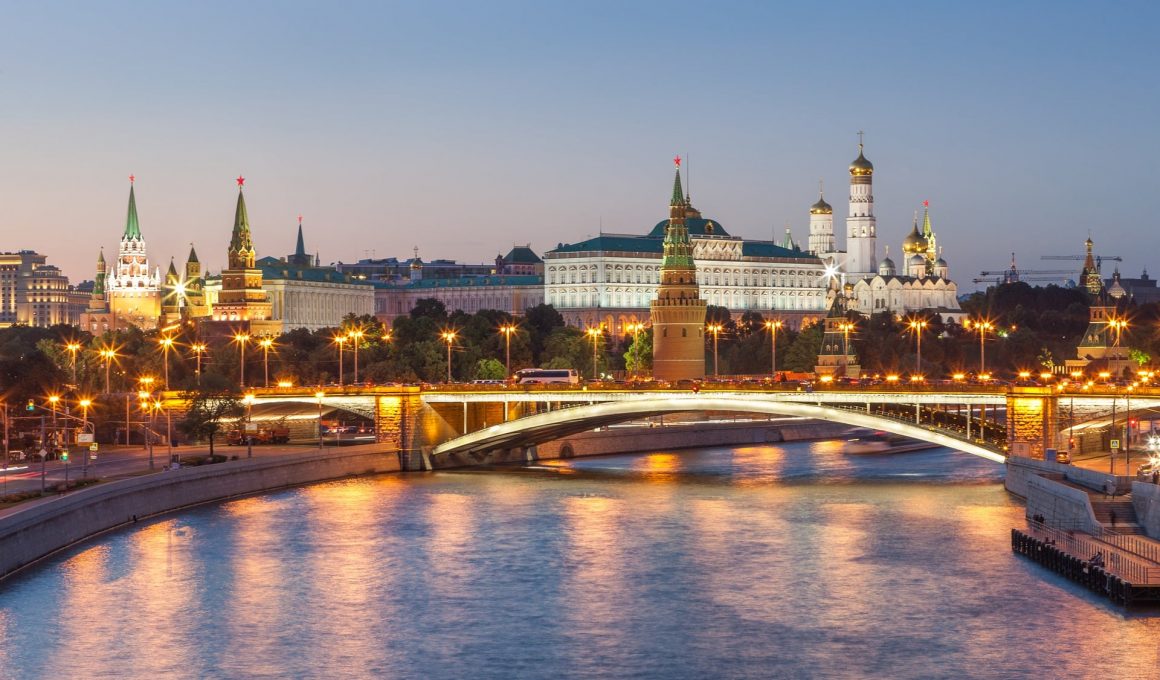
Discover when is the best time to visit Moscow. In this blog post, I will talk about weather, budget and other things to know to choose the best time when to go to Moscow for you. I cannot account the times when we went in Moscow. Here are the pros and the cons of each month taking all main criteria into account!
I will first describe the main criteria that will help you choose when to go to Moscow:
- Climate in Moscow: temperatures and weather
Special events in Moscow
- Budget and visa
Then I will talk about each season (go directly to this party if you already have an idea of the desired departure date):
- Advantages and disadvantages month by month
The weather cannot be the only criterion to decide when is the best time to visit Moscow for you. Even if the temperatures drop low, Moscow in December is just magical! This is why I advise to take into account several criteria at the same time. Also remember that it takes at least a month to get the Russian visa.
When to go to Moscow: climate and weather
The seasons are well marked. The mid-season months are not necessarily the best for the weather. However, they are not necessarily to be avoided, because, as we will see later, Moscow is a city that changes all the time and the prices can be more attractive. For example, for a lot of people winter is the best time to visit Moscow.
Weather in Moscow. Moscow is inland, making the city “more protected” from changing weather. For example, the weather is much more changeable in St. Petersburg. On the other hand, the weather in Moscow is more and more scorching in summer, we can then easily reach 30 degrees (for the Russians, it’s already the heat wave).
Moscow temperatures
As soon as you think of Russia, you want to do “Brrrr”. Let’s prepare our down jackets! Indeed, the Russian climate is not the mildest on the planet. However, it all depends on the region, because the country is very large. Moscow is almost at the same latitude as Copenhagen. As Moscow is relatively far from the coast, there is a pronounced continental climate. It is hot in summer and cold in winter.
In addition, global warming is there. For several decades, annual average temperatures have always been recorded above the past. I suggest you look at the averages over the past five years to be as close as possible to reality:
Sunshine and precipitation
Sunshine. This is surprising, but there is more sunshine in Moscow than in Paris or even in Berlin: 1,731 hours in Moscow, compared to 1661 in Paris and 1626 in Berlin.
Duration of the day in winter. We had questions about the length of the day in winter. So, here are a few things. As in Europe, the shortest days are in December. In Moscow, at the end of December, the sun rises around 9 a.m. and sets around 4 p.m. Then the day gets bigger until the end of June, when the day is the longest.
Precipitation. There is more precipitation in Moscow than in Paris (705mm against 637mm).
When is the best time to visit Moscow: interesting events
Moscow is a city that moves a lot. It is even said that this city never sleeps. So there are a lot of events, forums, exhibitions, conferences. Here I’m going to talk about the main recurring events that punctuate the year and that may help you decide when to go to Moscow.
End of year celebrations in Moscow
December 31 rather than Christmas. The Russians are eagerly awaiting the holiday season. Here on December 31 is like Christmas with us. Religion, “opium of the people” according to Marx, and, above all, its official absence marked the country during the Soviet years. This then reinforced the celebration of December 31, while Orthodox Christmas is January 7.
Russian calendar. In addition, it should be known that the first week of January is a bank holiday. Many Russians therefore do not work during this period. Europe also greatly influences the habits of Muscovites. Consequently, the Christmas markets start in early December and, for some, continue until early February!
Fairytale atmosphere. If you are wondering when to go to Moscow and you love the holiday mood, then the end of December – early January, and even February, is for you! There are many things to do during this time: for example, Christmas markets, decorations, winter games, skating rinks. In 2016, Moscow opened the largest ice rink in Europe. In short, the city is doing a lot of entertainment during this period and the general atmosphere is at the top! However, everything comes at a cost. You can see more detail below in the article, month by month.
Find our more in this blog post: Christmas and New Year in Moscow .
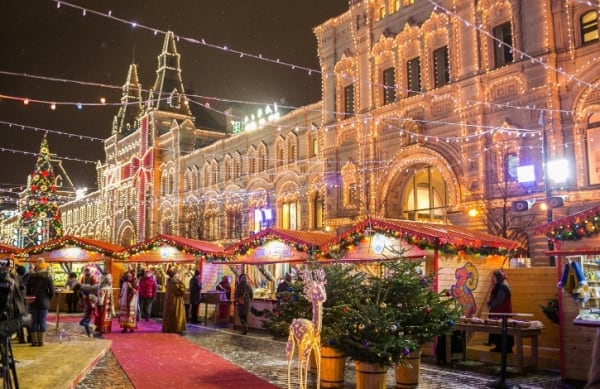
Visit Moscow in May
May 1 and 9 are two big festivals in Russia. Both dates are known worldwide. May 9 in Russia is May 8 with us in France. The signature that marks the end of the Second World War. The shift day is explained by … the difference in time zone.
The May 9 holiday is a very important holiday for the Russians. The Soviet human losses amounted to millions. So there are many families who have been directly affected by the war. The first big parade was organized by Stalin on June 24, 1945 in Red Square in Moscow. Later each year the USSR and then Russia organized a parade on May 9. Here is the video of the first parade dating from 1945 in color, then the last – that of 2016.
A disadvantage of the beginning of May. For the planned events, Red Square will not be completely empty. There are always installations for May 9, but also rehearsals. So, to the question “when is the best time to visit Moscow”, I would not say that May is the best one. You can find out more in the article “Moscow in autumn” below.
Throughout the year, the Moscow City Hall organizes free events (festivals, small markets, concerts, etc.) in the Red Square and in the streets of the city center. For example, there are two major interesting events:
- Festival of Lights “Around the World”: in 2019, it was from September 28 to October 4.
- Anniversary of the city of Moscow always celebrated the first weekend of September.
When is the best time to visit Moscow: budget, price seasonality, visa
Most touristy periods. Many travelers come to Moscow from May to October. This is the period when we see the most tourists in Moscow. In addition, many are also those who come at the end of December and at the beginning of January for the New Year. The beginning of May and the first week of January are also strongly requested, in particular by the Russians (school holidays, public holidays).
Accommodation. Hotel rates therefore necessarily increase during these periods of the year. But they do not go so far as to triple. To give an idea, count at least 80 euros in the city center for a double room with breakfast. You can read more about the districts of Moscow in my article: Where to stay in Moscow?
Guides and tours. Also take into account that during these periods it will be more difficult to find a guide at the last moment. It’s best to do it 2-3 months in advance. There will be more waiting or difficulty obtaining tickets during the months of high tourist influx: late December, early January, May, June, July, August.
Visa for Russia. The cost of the visa does not change depending on the month of the year. On the other hand, the deadlines can be longer if you make the request for the high tourist season (from May to October). Allow about a month. Getting the Russian visa is not complicated, there is a procedure to follow.
In Russia, the seasons are divided as follows:
- Fall: September, October, November.
- Winter: December, January, February.
- Spring: March, April, May.
- Summer: June, July, August.
Discover Moscow in autumn: when is the best time to visit Moscow in autumn?
From the beginning of September, we feel that the temperatures begin to drop gradually, especially at night.
Moscow in September
More and more travelers are choosing the month of September to go to Moscow. Because it is not cold yet and there are fewer tourists than in summer. Prices drop slightly, but remain higher than in the lean months of the year. There is also the city’s birthday on the first weekend in September, but also the “Around the World” festival towards the end of the month.
Moscow in October
You are likely to come across the colors of autumn from the beginning of October. The accommodation prices are starting to drop gradually. There is less waiting in the places to visit. Temperatures are not very low: during the day they are generally around +6 degrees. On the other hand, the only negative point can be the cost of plane tickets, if you leave during the French school holidays.
Moscow in November
It’s one of the least calm! Temperatures drop and can approach zero during the day in mid-November. Hotel rates are low, there are few tourists, and therefore less waiting in museums. It’s easier to get tickets for the Kremlin Palace of Armor, which can be very difficult in the summer. Guides also have more availability. So why not go to Moscow in November?
Discover Moscow in winter: when is the best time to visit Moscow in winter?
Winter is a very nice time to go to Moscow, because the Christmas and New Year decorations are installed from the beginning of December and are not removed until the end of February. To learn more about the different activities in winter, read this article: What to do in Moscow in winter? If winter temperatures scare you, check out Moscow in the spring (see below).
Moscow in december
Normally, negative daytime temperatures set in, although the weather can vary significantly from year to year. In general, from mid-December the snow is durable. It is from December 20 that more and more travelers come to Moscow. December 31st is celebrated like Christmas in France. Accommodation rates are higher from mid-December. It’s also more complicated to find a guide at the last moment. Furthermore, as in Europe, the days of December are the shortest of the year. But if you want to mark New Years Day, you will have lots of memories!
Moscow in january
January is also a very festive month. The first week of January is a public holiday in Russia. Besides, it’s also a week of Russian school holidays. There are more people in the streets, museums and everywhere in the city. To find out more about this time of year (Christmas markets, itineraries, etc.), read: Christmas and New Years in Moscow . Prices remain high during this week, but drop from mid-January.
Moscow in February
It’s the second quietest month of the year. In February, winter clearly takes its ease. The temperatures are the lowest, it’s a real winter! The days are longer in February than in December. So we’re enjoying the day more, and with the snow it’s really nice, because the weather in Moscow in February is pretty sunny. Accommodation rates are at their lowest, and the decorations are still there. So, if you are looking for when to go to Moscow, if the cold does not scare you and you appreciate the snowy landscapes, why not consider the month of February?
Discover Moscow in spring: when is the best time to visit Moscow in spring?
Spring is a contrasting period between March, which is still quite cold, and May, when we really feel the arrival of summer.
Moscow in March
The ice and snow begin to melt around mid-March. Winter is coming in March, but spring is not quite there yet. It’s the third quietest month of the year. It is therefore possible to visit the city more quietly. Accommodation prices are low, guides are available. The weather in Moscow in March is milder than in February. In addition, the days are longer, so you can take many walks.
Moscow in April
It is only from mid-April that we begin to feel the beginnings of sunny days. The weather in Moscow in spring and April in particular is getting milder and colder: we can expect +7 during the day. In addition, there are not many travelers yet and we fear to enjoy the places more quietly, but we feel that the start of the tourist season is approaching. Accommodation rates are lower than in May.
Moscow in May
The early May holidays attract many travelers to Moscow. There are also many Russians who come to the capital on public holidays. It is therefore advisable to plan visits in advance to avoid queuing once there. Red Square can be closed or partially closed for rehearsals for the May 9 parade, the same day and one or two days after. More info in: Moscow in May: events, budget, what to do?
Discover Moscow in summer: when is the best time to visit Moscow in summer?
All summer months are great, if you take temperatures into account. The weather in Moscow in summer is quite pleasant. However, in recent years, there have been great heat peaks or heat waves in July (30 degrees during the day).
Moscow in June
From June, you can take long walks in the city’s parks, very numerous and much appreciated by the locals. Boat trips are more enjoyable from June. On the other hand, the prices of accommodation in Moscow are higher than in the lean months. There are also more tourists. Book your hotel, tours and activities in advance.
Moscow in july
July is the hottest month, but we’re not on +40. Moscow is a city inland and therefore there is little fresh air, if it is very hot. We can do lots of walks to discover the city. We have written several complete itineraries so as not to miss anything of Moscow in our special Moscow travel guide. It also contains tips to save time and enjoy the city off the beaten track, as there are so many tourists during this time of year.
Moscow in August
Temperatures are starting to drop gradually, but there are still so many people. In order to be sure of the choice of accommodation, I advise you to book in advance. The same goes for guided tours or entrance tickets to the Kremlin. It’s also a good time to discover the city differently by going to places that are less touristy and more frequented by locals.
When is the best time to go to Moscow? In summary!
The best time to discover Moscow depends on the criteria you want to favor: the weather, the budget, the tranquility of the visits, the special events to be experienced on site.
In summary:
- The peak tourist season in Moscow begins in early May and ends in late September.
- Late December and early January is the best time to experience the holiday mood, but it comes at a cost.
- End of January, February, March, beginning of April, November are the quietest months of the year, when you can visit the city more calmly and on a reduced budget.
So, have you decided when to go to Moscow? 🙂 Do you plan to visit Moscow in spring, summer, autumn or winter?
Travel idea! As in all cases you will get a visa and there is only 4 hours by train between Moscow and Saint Petersburg, why not visit both cities? Read an example of a route here: Moscow to Saint Petersburg in one week.
If you still have doubts, take a look at what you can visit in Moscow in order to choose the best period: Things to do in Moscow in 1, 2, 3, 4 or 5 days.
For a great trip to Moscow:
- Visit Moscow and St Petersburg in one week: itinerary
- Where to stay in Moscow?
- Tourist voucher for Russian visa
Leave a Reply Cancel reply
Your email address will not be published. Required fields are marked *
Save my name, email, and website in this browser for the next time I comment.
Moscow Kremlin: skip-the-line tickets and 8 things not to miss
Bolshoi theatre moscow: how to buy tickets for bolshoi theatre ballet, you may also like.
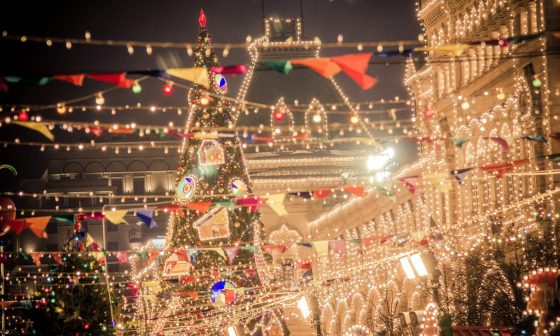
Christmas and New Year in Moscow: best markets and decorations to see
- September 18, 2023
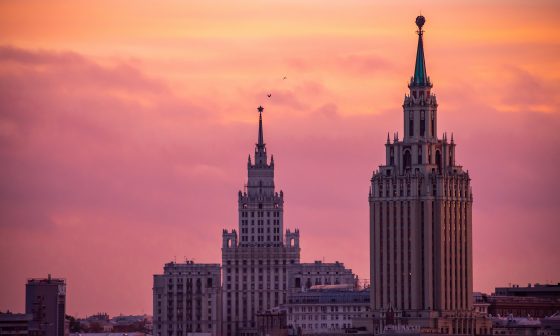
Visit Moscow and St Petersburg in one week | Itinerary, cost, tips
- November 3, 2023
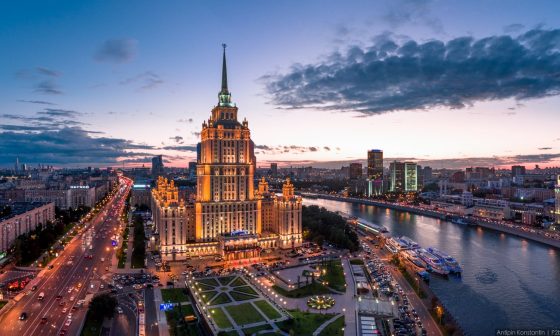
Things to do in Moscow: how to visit Moscow | Unmissable, cool & unusual
- September 2, 2023
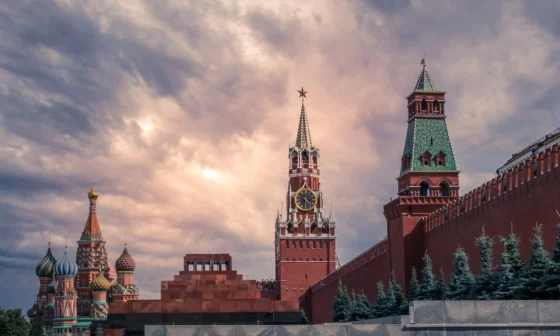
Red Square in Moscow: everything you need to know before visiting
- February 22, 2024
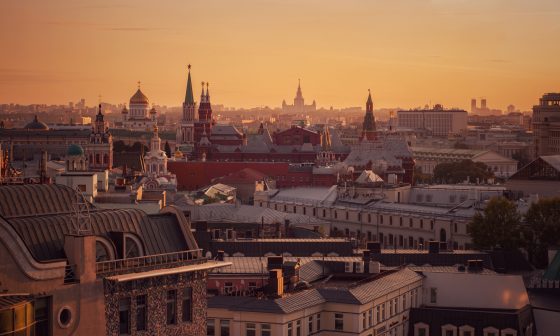
Where to stay in Moscow: best districts & hotels in Moscow, what to avoid
- February 13, 2024
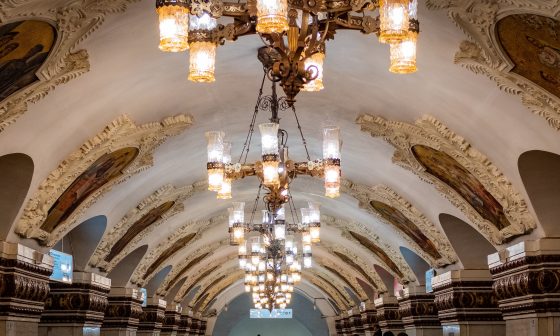
Moscow metro stations: most beautiful ones & how to use Moscow metro
- September 13, 2023

IMAGES
VIDEO
COMMENTS
We have notified the concerned Travel Agency who have posted this trail to reach out to you. You can expect a call from them soon. Done. India's second largest mangrove ecosystem. Largest congregation of Salt Water Crocodile. Take boat ride in Mini Amazon. Watch Birding of migratory birds.
Visitors can enjoy activities such as boat safaris, trekking, and bird watching. The park also has several accommodation options, including forest rest houses and eco-tourism cottages. Today, Bhitarkanika National Park is a symbol of India's commitment to preserving its rich biodiversity and natural heritage.
GOVERNMENT OF ODISHA ECO-TOURISM. Odisha is the land of famed forests, mountains, valleys, waterfalls, gorges, soaring peaks with stunning wildlife in their own natural habitats. The important wildlife in State are Elephants, Tigers, Leopards,Hyena, Sambar, Spotted Deer, Wild Boar, Giant Squirrel, Crocodile, Jungle Cats, Hornbills, many migratory birds etc.
After a full day packed with activities and excursions, curl into the comfort you deserve. Our gourmet chef will satisfy your appetite with delicious meals that stay in touch with our outback culture with local herbs & spices. 100 % Safe & Hygienic. 24x7 Assistance. Restaurant Dining.
Package & Itinerary. 1 Night 2 Days. 2 Night 3 Days. 3 Night 4 Days. DAY 1. Inclusions: Welcome & Check-in, Lunch at the respective dining area, Visit to Bhitarkanika sanctuary, Crocodile breeding centre & Museum, High tea. Activities at the camp area, Enjoy the cultural programme by the campfire in the evening, Dinner at the respective dining ...
Odisha Tourism has installed numerous eco-friendly yet luxurious camps in various national parks in the state. Bhitarkanika wildlife sanctuary is one of the most talked about national parks in the state. It is surrounded by lush mangrove forest, vast wetlands and the estuaries of three rivers flowing into the Bay of Bengal.
Bhitarkanika National Park is the second largest ecosystem in India. Sand Pebbles Bhitarkanika Tourism will let you experience the untold beauty of the wetland. The land of lush green mangroves, migrating birds and turtles, the menacing estuarine crocodiles, meandering watercourses, tranquil surrounding intercepted by the chirping of birds and the ever embracing nature, entrails visitors from ...
About Bhitarakanika. Mangorves are salt tolerant, complex and dynamic eco-system that occur in tropical and subtropical inter-tidal regions. Bhitarkanika is one such location of rich, lush green vibrant eco-system lying in the estuarine region of Brahmani- Baitarani in the North-Eastern corner of Kendrapara district of Orissa.
Bhitarkanika National Park truly plays a vital role in promoting eco-tourism in Odisha. Flora. The Bhitarkanika national park is home to over 70 species of Mangrove that is spread across the forest region, park, swamps, marshy lands, ceeks etc. Some of the other flora comprises The Spia, Casuarinas & Sundari and Indigo Bush grasses.
The starting price is around Rs. 4000 per night. Bhitarkanika Eco Stay: The Bhitarkanika Eco Stay Resort in Odisha is a unique and eco-friendly accommodation option for those looking to explore the stunning beauty of Bhitarkanika National Park. The resort is situated in the heart of the park, providing easy access to the various tourist spots ...
Eco Tourism Odisha - Bhitarkanika Nature Park. The Bhitarkanika Nature Park in Odisha offers a truly unique experience for visitors looking to immerse themselves in the state's natural beauty while also doing their part to support conservation efforts and better the lives of local communities. Bhitarkanika Nature Park camps are designed ...
Highlights: Eco Tourism Odisha, Eco tours Odisha India, Bhitarakanika National Park, Nature Tourism, Forest Cottage Accommodation, Community Tourism Odisha, Green Tourism Odisha, ... Bhitarkanika is a National Park situated in the eastern coast of Bay of Bengal. It spreads over an area of a 650 square kilometer in Kendrapara district.
Travel Desk. Our travel desk can help you create your itenary Daily Housekeeping. ... Green Peace Eco System Tour. 4-Day/3-Night (BKNP 03) Read More. Bhitarkanika - Baladevjew Tour. 2-Day/1-Night (BKNP 04) ... Bhitarkanika National Park is a 145 km2 (56 sq mi) large national park in northeast Kendrapara district in Odisha in eastern India. ...
Bhitarkanika is a Hot-spot of Biodiversity. It's home to largetst population of salt water crocodile in India. Also home to more than 215 species of avifauna including amazing Eight Varieties of Kingfishers. It is the second largest viable Mangrove Eco-System in India Harbours more than 70 species of Mangrove and its associates.
Bhitarkanika, as an eco-tourism destination, comprises lots of endangered species of flora and fauna that needs immediate attention by different stakeholders especially the government and other stakeholders to conserve and protect. Bhitarkanika is situated in-between the river Brahmani and Baitarani and forms the deltaic region in between these ...
1 Visitors can make night stays in luxurious rooms of Dangamal Nature Camp. Eco-tourists have to hire a boat from Gupti/Khola to reach Dangamal. 2 On the glittering white sandy beach, Habalikhati Nature Camp, a beach resort, offers you 9 nos of comfortable rooms facing the sea with all modern facilities. Habalikhati is one of the pristine and unexplored beaches of India.
Bhitarkanika Ecotourism and Eco-development Society (BEES), which is a registered society, has chief wildlife ... Thus, Delft can be promoted as an eco-friendly Tourism Island through concerted ...
Antara Launches Sustainably Built Catamarans For Bhitarkanika In Odisha .... To BOOK YOUR CRUISE with us:Eastern Treasure India Tours P. Ltd. +91 9437029989 Read Full Article Here. National Park is open from 14th January 2024. ABOUT JUNGLE Bhitarakanika THE CROCODILE HOME Mangorves are salt tolerant, complex and dynamic eco-system that occur in tropical and subtropical
Bhitarkanika ECO Stay Facebook Twitter Youtube. Home. Find A Trail; Find a Travel Agent; Deals & Offers; Map; Insider Stories; Advisory on COVID-19; SAATHI-Ministry of Tourism; Quick Links. Find A Trail; Find a Travel Agent; Deals & Offers; Map; Insider Stories; Advisory on COVID-19; SAATHI-Ministry of Tourism;
Mr. Evgeny Kozlov, Deputy Head Mayor of Moscow Government and Chairman of the Moscow City Tourism Committee, who has come to the city to attain BLTM, the annual prestigious travel event at the Leela Ambience Convention Centre, Delhi spoke with TW Editor Anirban Dasgupta on his vision and goal with the all-new tourism initiatives in Moscow. The bond between India and Russia has a long history ...
About the portal. A technological tool for effective communication between the leading players in the Moscow tourism market and representatives of the foreign/regional tourism industry through online events. OBJECTIVES: • Building long-term cooperation with foreign/regional representatives. • Raising awareness among foreign/regional ...
On August 31 Moscow City Tourism Committee jointly with Aeroflot presented the "Russian holidays: From the capital of Russia to the capital of Siberia". As part of the project, Indian travellers will have the opportunity to discover the beautiful sights of Moscow and the Mysteries of Siberia, explore the Siberian capital, Tyumen, soak in the thermal springs and try local cooking.
Guides and tours. Also take into account that during these periods it will be more difficult to find a guide at the last moment. It's best to do it 2-3 months in advance. There will be more waiting or difficulty obtaining tickets during the months of high tourist influx: late December, early January, May, June, July, August. Visa for Russia.